- Spirit 1.0 Plus
- Spirit 1.0 Evo
- Pod Drive Evo
- E-Series Battery
- G102-100 Battery
- Find a Dealer
- Have a Dealer Contact Me
- Product Registration
- Support Center: FAQ & Guide
- Video Tutorial
- Download Center
- Performance Bulletins

Electric Sailboat Motor: Range, Cost, Best Kits for Conversion
Today, owning a completely green sailboat has been made possible with electric sailboat motors.
Imagine cruising with the silence of an electric sailboat motor and the ease of use with a simple press on the start button. What’s better is there are no exhaust fumes at all with significantly less maintenance.
It’s so appealing that a lot of sailing liveaboards have made their electric sailboat motor conversion.
However, some sailors are still on the fence, worrying about the range and price of the electric sailboat motor.
If you are one of them, you are in the right place!
This post will guide you through every aspect you need to know about electric sailboat motors to help you make an informed decision.
Besides, you will get professional insights on how to make the electric sailboat motor conversion for your own boat and learn the best electric sailboat motors (with honest reviews).
Table of contents:
- Electric Sailboat Motors: Confusion Explained
Electric Sailboat Motor or Combustion Motor
- Electric Yacht Motor Conversion: Two Solutions
- How to Size an Electric Sailboat Motor
Best Electric Sailboat Motors (with Reviews)
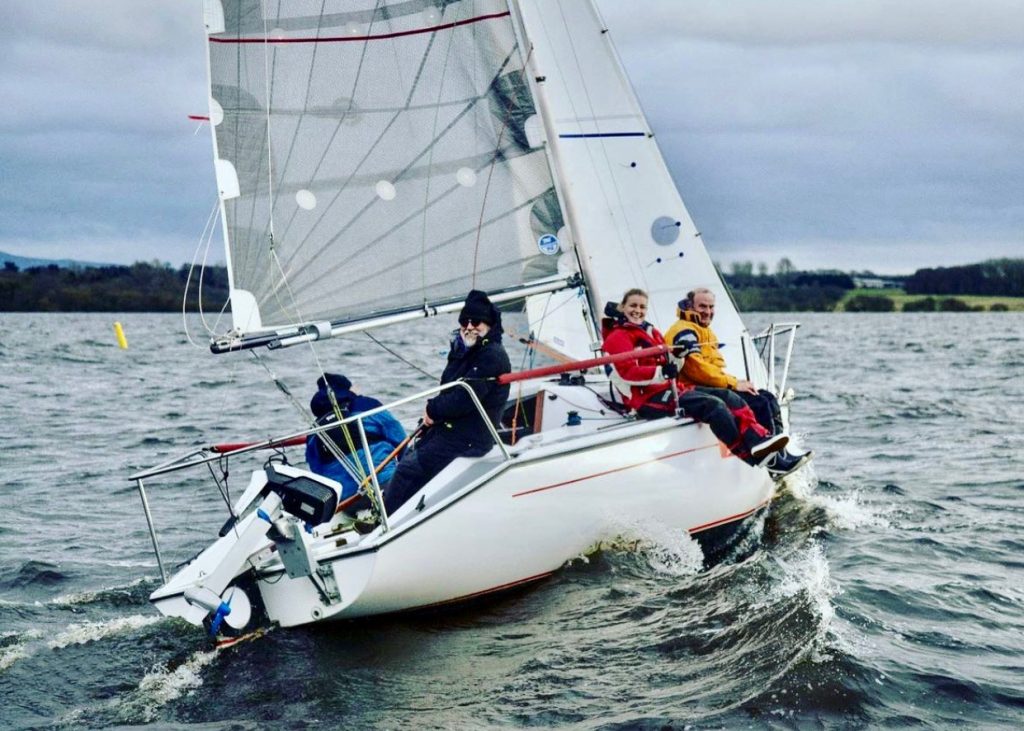
Electric Sailboat Motor: Confusion Explained
Can you go cruising with an electric sailboat motor? Can you put an electric motor on a sailboat? Are there any limitations?
Whether electric sailboat motors are a good fit for your boat is not a YES or NO question. Here we will explain your top worries with statistics and facts. That way, you can make a wise decision according to your situation.
You may hear some complaints about the batteries and range of the electric propulsion.
However, their experience may not suit electric sailboat motors.
In fact, even small electric engines work pretty well in many sailboats. That’s because most of the time, the wind can power the boat, and the motor is just used for docking or in rare times when there is no wind.
Therefore, it makes more sense to learn electric sailboat motor performance in real-world applications.
Here is a test report of a 3 HP electric sailboat motor on an RS21 racing sailboat:
| Power (W) | Speed (mph / kph) | Runtime (hh:mm) | Range (mile / km) |
| 50 | 2.2 / 3.5 | 20:00 | 43.5 / 70 |
| 150 | 3 / 4.8 | 6:50 | 19.3 / 31 |
| 300 | 4 / 6.4 | 3:20 | 12.4 / 20 |
| 500 | 4.2 / 6.8 | 2:00 | 8.5 / 13.6 |
| 700 | 4.8 / 7.7 | 1:30 | 6 / 9.7 |
| 900 | 5 / 8 | 1:05 | 5.6 / 9 |
| 1000 | 5.5 / 8.8 | 1:00 | 5.5 / 8.8 |
As you can see, the small electric sailboat motor can run at 5.5 mph top speed for one hour continuously.
And there is a big difference in terms of range vs speed for electric sailboat motors:
If you lower the speed, the range and runtime can be greatly extended. The slower you go, the further you’ll get. For example, if you cut your speed in half, the electric sailboat motor can last 7 hours and go 20 miles within one charge.
That’s pretty sufficient if you use the electric yacht motor mostly for docking or as an auxiliary engine.
Faster top speed (and more range) is available with higher power electric sailboat motors depending on your specific requirements. Contact a specialist to design your electric sailboat motor solutions.
Also, don’t forget to get the electric sailboat motor with regeneration (See recommendations below).
That’s to say, when there is a lot of wind and you’re moving rapidly via your sails, they regenerate and store electric power on the batteries to keep you moving at other times. Solar recharging is also a plus.
Essentially, the range depends on how many batteries you have, so it’s not a limitation of electric sailboat motors but energy and batteries.
If you are still worried, you can offset this by getting a diesel generator, which is more efficient than a diesel engine. And it is a range extender when you need it, but for 90% of your motoring that you don’t need the range, you can rely on the electric sailboat motor.
Some of you might be concerned about the extra weight of the batteries.
In fact, an electric sailboat motor with lithium batteries weighs less than a diesel engine, particularly if you include the fuel weight.
If you want a lightweight electric sailboat motor solution, make sure you get one with LiFePO4 batteries . Compared with other marine batteries, they are more compact in design with much less weight and higher energy density.
Some more advanced electric motors for small sailboats (such as Spirit 1.0 Evo) feature an integrated lightweight battery. So you don’t need to worry about the complex wiring to hook it up or extra space to store the battery.
This is a huge plus if you want to use the electric sailboat motor on a tender or dinghy.
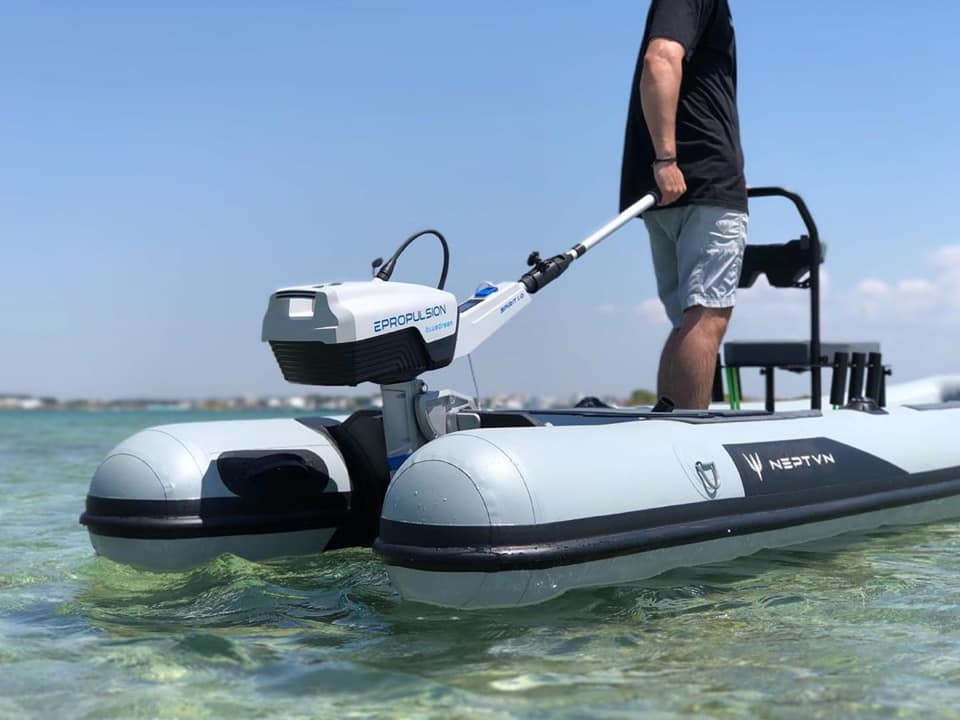
Here is also a chart that collects the weight of some popular electric sailboat motors for your reference:
| Model | HP | Motor Weight | Battery Weight | Note |
| Spirit 1.0 Evo | 3 HP | 11.3 kg / 24.9 lbs | 8.7 kg / 19.2 lbs | 1276 Wh Integrated Battery |
| Navy 3.0 Evo | 6 HP | 24.3 kg / 53.6 lbs | 48 kg / 105.8 lbs | 4096 Wh E80 Battery |
| Navy 6.0 Evo | 9.9 HP | 36 kg / 79.4 lbs | 87 kg / 191.8 lbs | 8960 Wh E175 Battery |
For many people, another big problem with electric sailboat motors is the cost.
It’s true that a gasoline outboard with similar power is a lot cheaper to buy. However, the electric sailboat motor eventually wins in long-term operating cost. That’s especially the case if you are going to do a lot of motoring.
Electric sailboat motors save on fuel and maintenance costs, which can build up to a large amount over time.
Here is a chart that compares the cost of a 3HP electric sailboat motor (coming with a built-in battery) with its combustion counterpart:
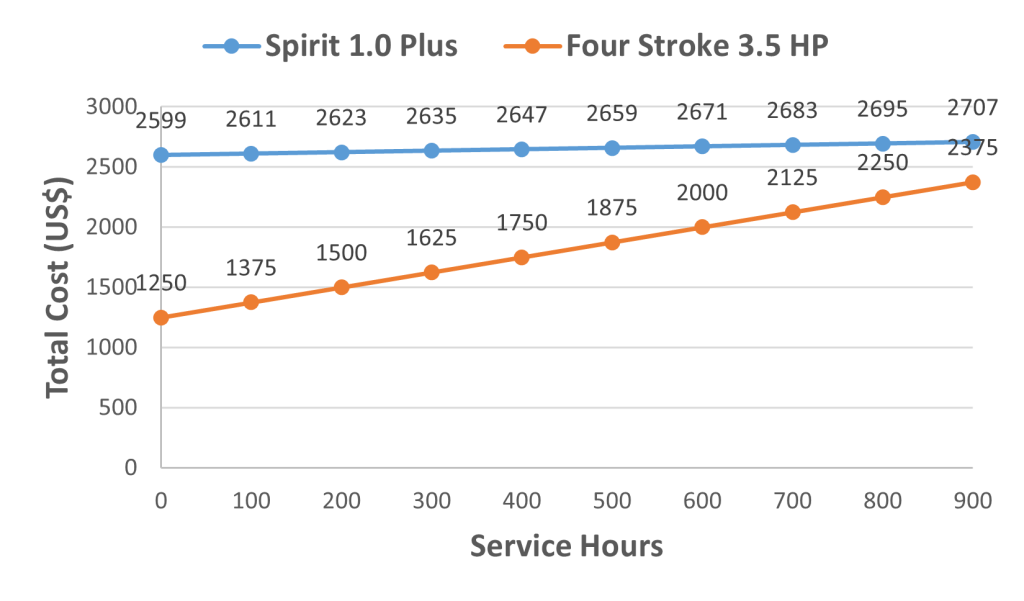
That’s to say, you will cover the price difference for electric yacht motors eventually as long as you use it long enough. Click to check the details of the calculation .
What makes the electric sailboat motor even more worthwhile is it saves you a lot of hassles, especially for sailors who only use the engine in and out of the harbor. Dealing with the maintenance of the gas outboard for a 10 minute motor out of and into the harbor is disproportionate and painful.
*The higher horsepower electric sailboat motor may be different in terms of the cost calculation. Check out the outboard motor pricelist by HP for more information.
As you may have already noticed, electric propulsion has already been widely used in the marine industry:
It’s quiet while motoring, clean to handle, environmentally friendly, with less maintenance and operation costs.
The electric sailboat motors are easier to use with dramatically fewer moving parts to break and no worries about being a diesel mechanic to deal with the hard pulling start. You can have it always on, so it is ready whenever you need it.
And it makes even more sense in sailing applications:
You don’t really need to motor much if your plan is to actually sail. If you are completely becalmed, you will probably just need to motor at 2 knots to keep making way, which is easy for electric sailboat motors.
If you mostly use the motor to get into and out of the harbor, the electric sailboat motor also works great for you.
You can always charge up at the dock, motor out of the marina (or even motor to your sailing area or race start), then hoist the sails and when you’re through, the batteries are charged again.
The electric sailboat motor is also useful as a backup (kicker) motor in case your system goes down. That’s why you can see people pushing a lot of big boats with small electric motors. (Click to learn more information about kicker motors .)
Personally, it’s really nice to have an electric auxiliary in the boat – no smelly, messy diesel and motor oil to deal with, a much simpler system with less maintenance, and much, much quieter operation.
However, powerboats tend to have much higher requirements in terms of both power output and runtime. In that case, an electric sailboat motor can be hard to satisfy your needs.
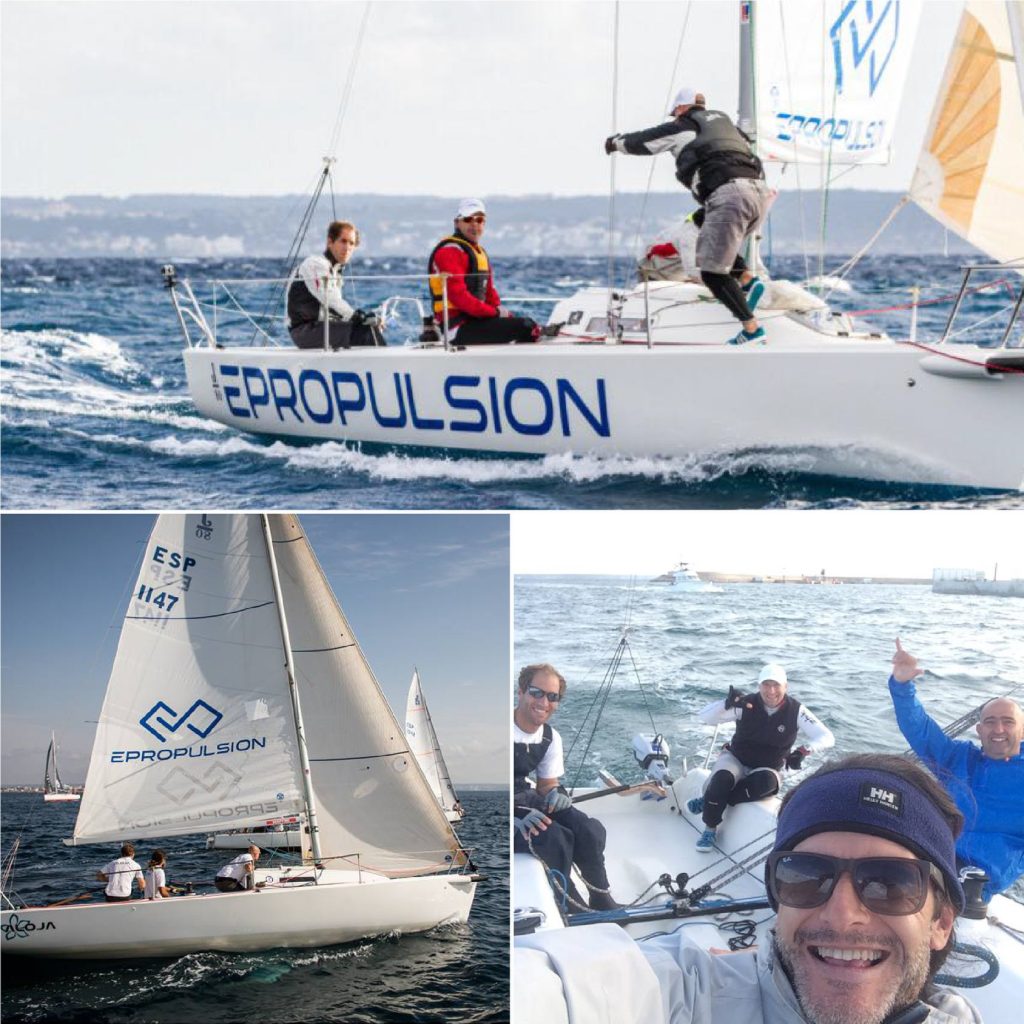
How Do You Size an Electric Motor for a Sailboat?
As a rule of thumb, you will need approximately 1 HP per 550 lb of the displacement of your boat.
Generally speaking, a 3 HP electric sailboat motor can push a sailboat up to 25 ft and a 9.9 HP motor is sufficient for a 30 ft sailboat to motor at a satisfying speed.
However, bear in mind the horsepower you need always depends on your needs and applications.
It’s better to check the data from real-world tests to decide whether the electric sailboat motor is suitable for your specific needs.
For example, the 9.9 HP electric sailboat motor Navy 6.0 allows you to go at 6.9 mph (11.1 kph) on a 30 ft sailboat, and the range can be extended to 46.4 miles if you decrease your speed to 2.9 mph (4.6 kph).
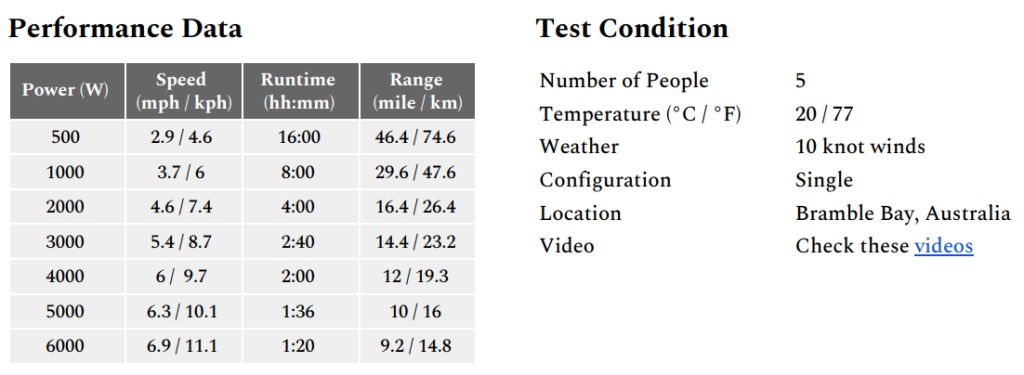
Click to see more test reports with other electric motor and sailboat combinations, and find the electric sailboat motor that suits you best.
If you are still not sure about the size of the electric sailboat motor for you, feel free to leave us a comment and we will get back to you ASAP with professional suggestions.
Electric Sailboat Motor Conversion
Basically, there are two ways for you to convert your sailboat to a clean and quiet electric drive system:
You can either convert your current vessel to electric or buy an engineless yacht and install an electric sailboat motor on your own.
#1. Repower Your Sailboat with Electric Motor
If you decide to replace the diesel engine with an electric motor, you will need to do a lot of preparations:
The DIY approach requires an electric sailboat motor kit (including motor and controller), batteries, a good level of mechanical ability and basic electrical knowledge, as well as some common tools such as a voltmeter.
You will need to take the old engine out for the new electric sailboat motor installation. It’s not an easy task that involves removing the engine mounts and the drive shaft (dealing with the numerous hoses and cables), taking out the engine, exhaust system, fuel tank, and its attendant tubes, etc.
Remember to balance the boat to avoid listing during the electric sailboat motor conversion.
Then in with the new electric sailboat motor. The installation process can be straightforward if you choose the electric sailboat motor kit wisely (See steps below). Furthermore, you can set up solar charging for your electric sailboat motor with solar panels and charger.
Many sailors have recorded their electric sailboat motor conversion process and experience. Be sure to check them out to get some inspiration. For example, Ed Phillips has documented everything which can serve as a guide for newbies to get started.
Mind you there can be a whole heap that can go wrong in designing and maintaining the electric sailboat motor systems. You really need to be totally on top of it if you want decent performance or reliability.
If you are not that technically inclined, it’s better to talk to a specialist first to discuss your plan for a smooth electric sailboat motor conversion.
#2. Install an Electric Motor in a Sailboat
If you own an enginless sailboat, the electric sailboat motor conversion is much easier for you.
All you need to do is to find a reliable electric sailboat motor and install it in simple steps. The whole process can be easily done, even for beginners. Here we take the popular 6 HP electric sailboat motor Navy 3.0 as an example to show you the installation process:
- Step 1 : Rotate the clamps or use the screws to fix the outboard onto the sailboat.
- Step 2: Mount the steering system in the proper position.
- Step 3: Install the tiller on the electric sailboat motor.
- Step 4: Connect the batteries to the electric sailboat motor system.
Click to check the video tutorial that guides you through each step of the installation.
If you are worried about aesthetic issues and want higher horsepower options, an electric inboard motor can be a better suit for your sailboat. If you prefer an inboard motor for your sailboat, contact our OEM team to get an electric propulsion solution tailored to your needs.
Note : You might find some electric trolling motors rated by #s of thrust on the market. Actually, those electric trolling motors for sailboats can only provide limited speed and range. If you are heading into the wind, the trolling motors for sailboats are definitely not an ideal solution.
Once you’ve evaluated if electric sailboat motors are right for you, there are a lot of options for electric systems.
Here are some popular electric sailboat motors with positive reviews from customers worldwide. Fast charger is available for all the models recommended to reduce your charging stress.
#1. 3 HP Spirit 1.0 Evo
If you are looking for an electric motor for a small sailboat, be sure to check out the ePropulsion Spirit 1.0 Evo. It’s suitable for large daysailers or small cruising sailboats under 25 ft.
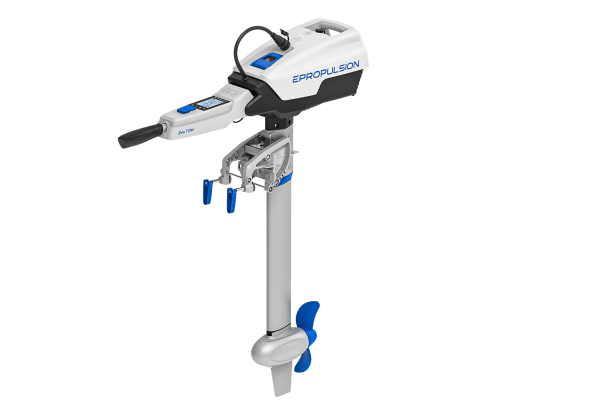
With the Spirit 1.0 Evo electric sailboat motor, you can go 5.5 mph (8.8 kph) at top speed on the 21 ft RS21 sailing boat, or troll for 20 hours continuously at 2.2 mph (3.5 kph) according to our test .
This electric sailboat motor with regeneration allows you to recover energy from the prop while under sail. It will start to generate power automatically when the sailing speed reaches 2 knots.
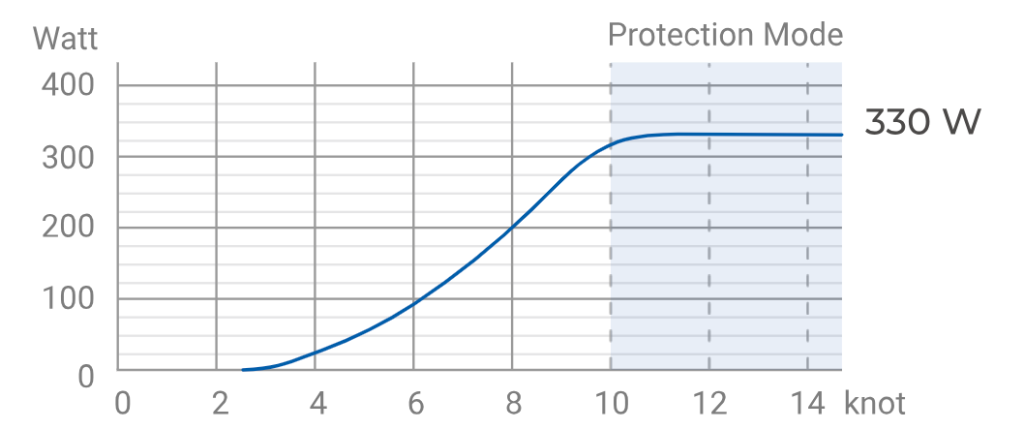
As an electric auxiliary sailboat motor, it can also be easily installed on your tender boats or yacht dinghies since it’s portable and easy to transport (with a lightweight integrated battery).
Features You Will Love:
- Come with the industry-first hydrogeneration capability
- Direct-drive technology makes it maintenance-free
- Portable with a 1276Wh large integrated lithium battery for long range
- Safety wristband keeps you safe in case of MOB
- Digital operation keeps you informed of the battery status
Spirit 1.0 Evo Electric Sailboat Motor Reviews:
“Great weekend with my 17′ sailboat powered by the Spirit Evo. This is great. Quiet and reliable. Went at 3/4 throttle for about 1.5hrs when taking it back to boat ramp.” – Robert Taylor
“Very happy with our Spirit Plus. Pushing our Kolibri 560 a 750 Kg sailboat, with ease. Doing about 5.8 km/h at 500W.” – Frank van Asten
#2. 6HP/9.9 HP Navy Evo Series
If you want a little more juice on the electric sailboat motor, check out the ePropulsion Navy Series. It offers 6 HP and 9.9 HP models for your selection and it provides sufficient power for sailboats up to 30 ft.
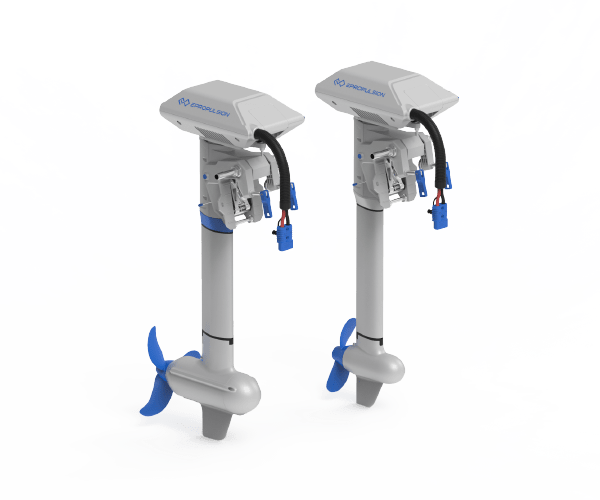
According to our test , the 6 HP electric motor Navy 3.0 can push the Catalina 25 sailboat (25 ft) at 6 mph (9.6 kph) top speed, while the Olga 33 sailboat (33 ft) can go at 7.5 mph (12 kph) with the 9.9 HP Navy 6.0 motor.
The Navy series electric sailboat motor also comes with regeneration features which can be recharged with hydrogeneration, wind turbine, and solar panel.
- Four controls to fit your sailboat installation and your boating style
- Accompany LiFePO4 batteries (need separate purchase) are more energy efficient
- Digital display offers real-time monitoring of the power and battery
- Magnetic kill switch and safety wristband keep you safe on the boat
- Electric start saves you trouble pulling the cord to start
Navy Series Electric Sailboat Motor Reviews:
“I have a Navy 3.0 with E80 on a Catalina 25 sailboat. It is working well. Currently I am using about 4% battery to go in/out of the marina by boat.” – Aaron Young
“Just finished my 8 weeks sailing journey in the Baltic Sea. The two Navy 3 outboards provide enough power for my 33ft catamaran. The 400W solar panels provided enough energy for engines and all other energy consumed on board with 2-6 persons. The two Navy Batteries provide power for engines and all other on-board electric devices. I never had to use shore power, so totally self-sufficient electric system.” – Martin Hildebrand
Recent Posts

ePropulsion Teams Up with Vision Marine Technologies to Unveil and Propel the Phantom Plastic Boat

ePropulsion Launches New Business Unit – ePropulsion Commercial

Outboard Motor Battery: What Size Do I Need & What’s Best for My Boat?
Join the discussion cancel reply.
Save my name, email, and website in this browser for the next time I comment.
Notify me via e-mail if anyone answers my comment.
This site uses cookies to personalize your experience and analyze site traffic. By clicking accept or continuing browsing the site, you are agreeing to our use of cookies. See our Privacy Policy here .
View the Serial Number
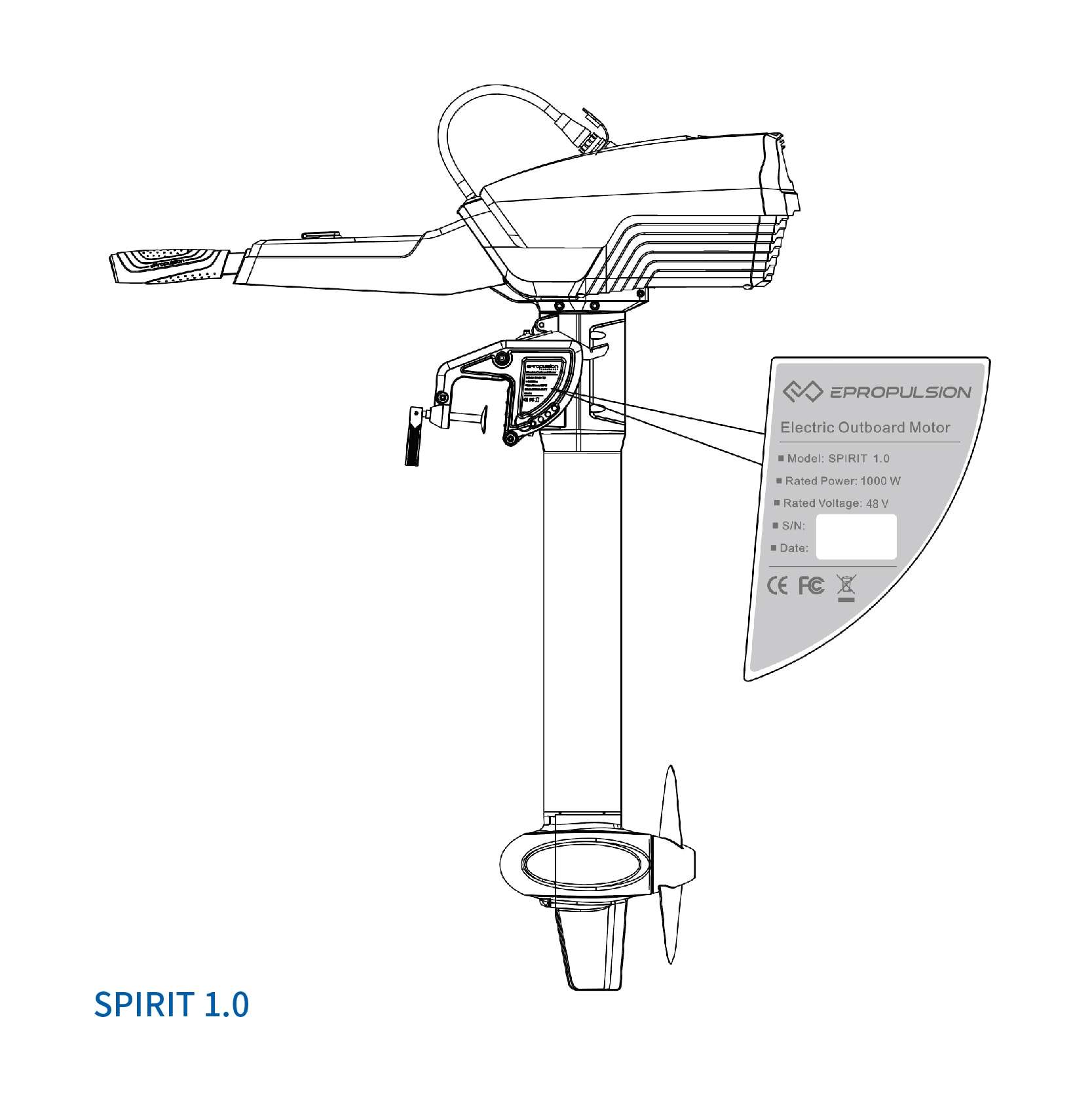
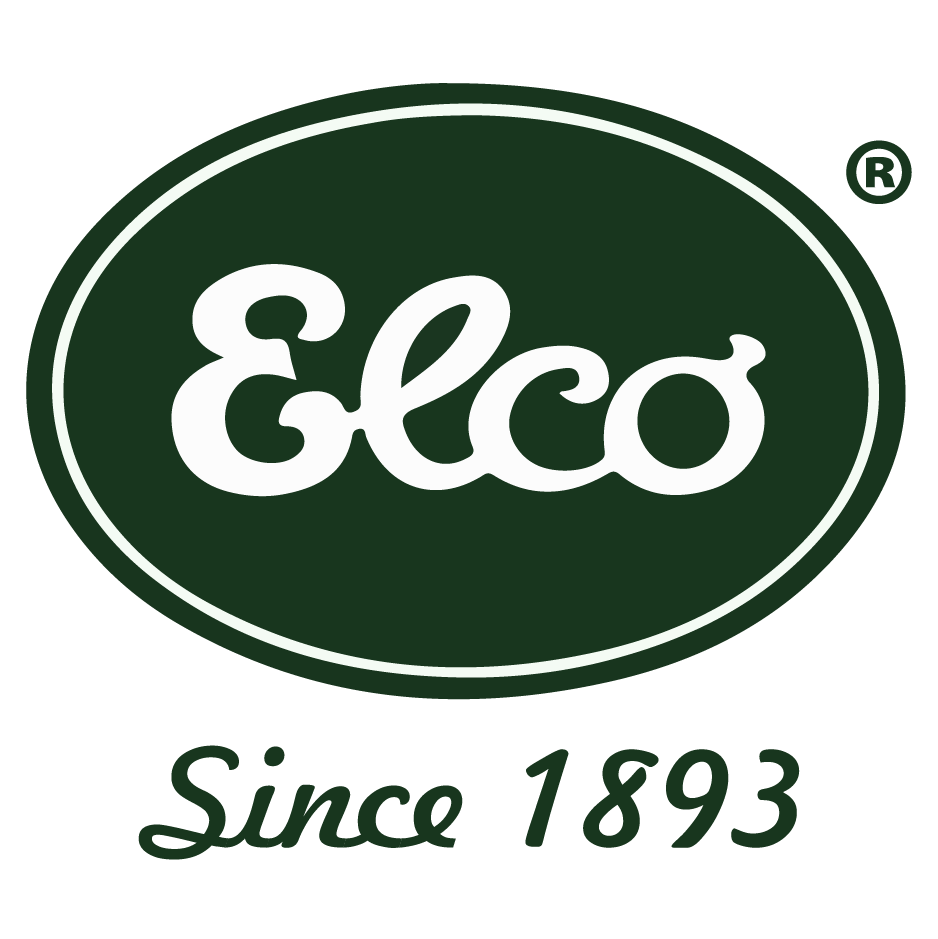
- Electric Inboard Motors
Showing all 7 results
Product categories
- Electric Outboard Motors 6
- Electric Inboard Motors 7
- Batteries 6
- Marine Battery Chargers 10
- Marine Battery Cables 16
- Marine Battery Monitors 6
- Electric Tilt and Trim Options 2
- Outboard Motor Propellers 4
- Marine Coupling Hardware 3
- Electric Motor Mounts 1
- Remote Throttle Options 3
Electric Inboard Boat Motors
Electric inboard boat motors from Elco Motor Yachts are suitable for new boats, or as an upgrade to existing vessels. Our electric inboard boat motor conversion kits can turn a noisy gas-powered boat into a serene pleasure boat for quiet enjoyment of nature’s beauty.
Our electric inboard boat motors, ranging from 6HP to a robust 200HP, are a testament to Elco’s commitment to innovation and sustainability. We meticulously craft each electric inboard motor to offer an unmatched boating experience. Whether you’re navigating serene lakes or braving the open ocean, our motors will power your journey with efficiency and reliability.
For sailing enthusiasts, our electric sailboat motors are game-changers. The silent operation of these motors enhances the tranquility of sailing, allowing you to listen to the waves lapping against the hull and enjoy the sea breezes without the disruption of engine noise.
If you’re looking to retrofit your existing watercraft, consider our electric inboard boat motor conversion kits. These kits enable you to transform your gas-guzzling boat into a quiet, eco-friendly vessel. Experience the joy of boating in harmony with nature, knowing that your adventure is leaving minimal environmental impact.
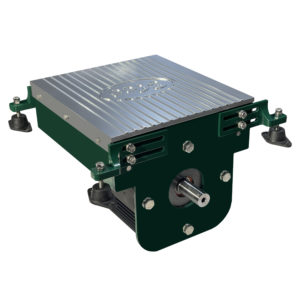
EP-6 Electric Inboard
Comparable HP: 6HP Voltage: 24 Volts Suggested Battery Package Options: Deep Cycle AGM - Victron - 12V / 110Ah (2 pack) Lithium Iron Phosphate - 24V / 100Ah (single pack)
EP-12 Electric Inboard
Comparable HP: 12HP Voltage: 48 Volts Suggested Battery Package Options: Deep Cycle AGM - Victron - 12V / 130Ah (4 pack) Lithium Iron Phosphate - 48V / 100Ah (single pack)
EP-20 Electric Inboard
Comparable HP: 20HP Voltage: 48 Volts Suggested Battery Package Options: Deep Cycle AGM - Victron - 12V / 165Ah (4 pack) Lithium Iron Phosphate - 48V / 100Ah (2 pack)
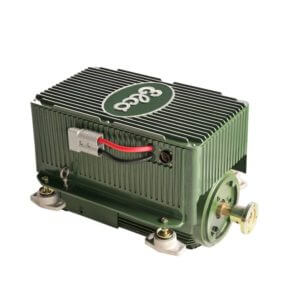
EP-40 Electric Inboard
Comparable HP: 40HP Voltage: 108 Volts Suggested Battery Package Options: Deep Cycle AGM - Victron - 12V / 165Ah (9 pack) Lithium Iron Phosphate - 96V / 100Ah (6 pack)
EP-70 Electric Inboard
Comparable HP: 70HP Voltage: 108 Volts Suggested Battery Package Options: Deep Cycle AGM - Victron - 12V / 220Ah (9 pack) Lithium Iron Phosphate - 96V / 100Ah (8 pack)
EP-100 Electric Inboard
Comparable HP: 100HP Voltage: 144 Volts Suggested Battery Package Options: Deep Cycle AGM - Victron - 12V / 220Ah (12 pack) Lithium Iron Phosphate - 144V - (Call for custom options)
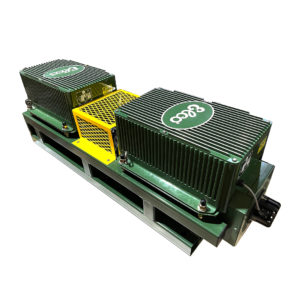
EP-200 ELECTRIC INBOARD
Comparable HP: 200HP Voltage: 144 Volts Suggested Battery Package Options: Deep Cycle AGM - Victron - 12V / 220Ah (24 pack) Lithium Iron Phosphate - 96V / 100Ah (Custom setup)
Award-Winning Electric Motors

The Trusted Solution for Electric Boating
Our unbeatable, award-winning electric inboard motor system is not only highly-reliable but it’s also one of the most powerful inboard motors on the market. With a maximum of 200HP and over 50,000 hours of service life, you can be confident in your choice to go electric with an Elco electric inboard boat motor.
At Elco, we make electric boating accessible by design. Our electric motors for boat inboards are intentionally manufactured with a plug-and-play design that makes installation simple. If you’re looking for a powerful motor for a new build or you’re retrofitting the motor for an existing inbound system, our electric propulsion system is the superior option for electric boating.
Electric inboard boat motors by Elco offer numerous advantages to boat owners. The incredibly versatile design makes our electric inboard motors well-suited for a wide variety of boats. Sailboats, launches, trawlers, catamarans, workboats, water taxis – the range of compatible boats is vast. If your water vehicle measures between 15 and 120 feet, it could be eligible for an exceptional upgrade to our powerful electric inbound propulsion system.
In regards to powerful electric boating, the Elco Electric Propulsion System gives you the opportunity to customize your boating experience. We offer a wide range of capabilities when it comes to horsepower. From 6HP all the way to 200HP, you can find an electric boat inboard motor that works perfectly for your vessel. Swift and efficient electric boats are possible with the application of an Elco electric inboard motor.
The Elco Electric Propulsion System is all-encompassing, meaning we provide you with all the essential components you need to power your vessel. Our plug-and-play format allows users to have their newly electric inboard system fully operational in just minutes. This level of convenience and simplicity is something you can’t find amongst other electric boat inboard motors.
We’re proud to offer a simple yet dynamic design that is highly efficient and exceptionally powerful. Electric re-powering is much more straightforward than a diesel replacement, and we’ve worked to streamline this process even further. Our electric motors are also highly reliable. We employ AC induction for our inboard systems, making them up to 40% more efficient than competing DC induction motors on the market. They accelerate faster and create more torque all while requiring minimal maintenance.
The famed Elco inboard electric motor is simple and reliable while being incredibly powerful. It not only offers users a uniquely impressive experience but it’s also considered the premier modern solution. Boating enthusiasts know first-hand how important it is to take care of our waters. The planet depends on us to respect and care for the environment. With our electric inboard propulsion system, you can have an exciting boating experience while reducing your carbon footprint. This way we can all enjoy the beautiful waters for generations to come.
Quick Shopping Links
- Electric Outboard Motors
- Electric Outboard Motor 5 HP
- Electric Outboard Motor 9.9 HP
- Electric Outboard Motor 14 HP
- Electric Outboard Motor 20 HP
- Electric Outboard Motor 30 HP
- Electric Outboard Motor 50 HP
- Electric Inboard Motor 6 HP
- Electric Inboard Motor 12 HP
- Electric Inboard Motor 20 HP
- Electric Inboard Motor 40 HP
- Electric Inboard Motor 70 HP
- Electric Inboard Motor 100 HP
- Electric Inboard Motor 200 HP
Battery Chargers
- NOCO GEN 2 Deep Cycle Battery Charger
- NOCO GEN 3 Deep Cycle Battery Charger
- NOCO GEN 4 Deep Cycle Battery Charger
- NOCO GX2440 Lithium Battery Charger
- NOCO GX4820 Lithium Battery Charger
- EV- AGM / Lithium Battery Charger
- Electric Boat Motor Batteries & Accessories
- Elco Classic Launches
- Elco in the News
- Customer Stories
- Press Releases
- Get Updates
- Benefits of Going Green
- Our Technology
- Frequently Asked Questions
- Honoring Heroes
- Tell us about your boat
- Dealer Application
- Dealer Log-In
- Return Policy
© 2024 Elco Motor Yachts. All Rights Reserved. Sitemap.

- Privacy Overview
- Strictly Necessary Cookies
This website uses cookies so that we can provide you with the best user experience possible. Cookie information is stored in your browser and performs functions such as recognising you when you return to our website and helping our team to understand which sections of the website you find most interesting and useful.
Strictly Necessary Cookie should be enabled at all times so that we can save your preferences for cookie settings.
If you disable this cookie, we will not be able to save your preferences. This means that every time you visit this website you will need to enable or disable cookies again.

- AMERICA'S CUP
- CLASSIFIEDS
- NEWSLETTERS
- SUBMIT NEWS
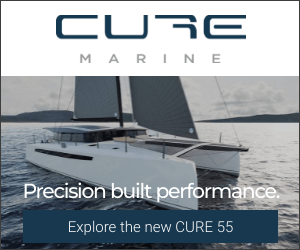
How to convert a small blue water, sailboat to an electric vessel on a budget
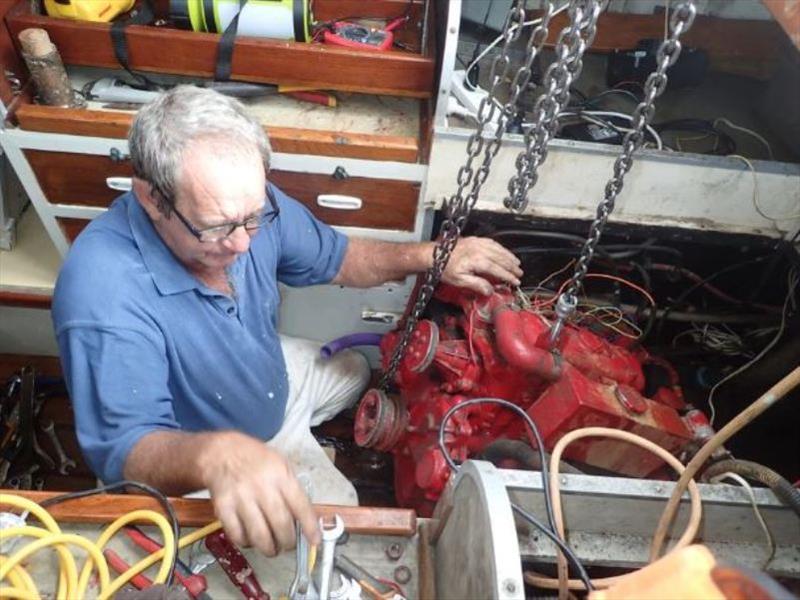
Related Articles
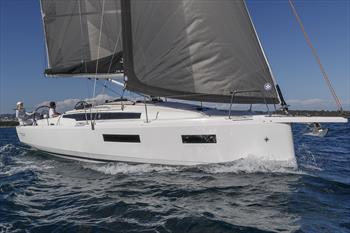
Yachting Monthly
- Digital edition

Electric yacht: What are the options for going electric?
- Will Bruton
- July 17, 2020
The options for having an electric yacht or a hybrid-electric yacht are growing in popularity; we outline the current options for those making the switch

The Arcona 380Z is a standard production yacht that has been adapted for electric propulsion. Note the increased solar panel surface area with soft panels bonded to the sails. Credit: Jukka Pakainen
A modern electric yacht can come in all shapes and sizes, from the latest high-tech speed boats with recently developed high-performance electric engines, to a traditional tender with an electric outboard on the back. Increasingly yachts are going electric too as electric engines become increasingly capable of propelling boats weighing several tonnes, and with the rigging for sails, at a reasonable speed for an acceptable length of time.
Since the invention of the marinised engine , there has never been the capacity to store enough fuel to cover significant distances in boats that are smaller than a tanker, with fuel capacity always being the limiting factor. As such the best way to cover long distances on a boat fit for a small number of passengers was, and remains, wind power.
For all the many green attributes that using the power of wind offers, there is no escaping that for most, fossil fuels still represent some part of sailing – whether that be a diesel engine to motor in light winds, onto and off a mooring , or to generate power for onboard electronic systems. Even a small tender used to go from ship-to-shore is often fitted with an outboard motor.
Recent advances in electric power, however, have started to make electric propulsion a reasonable alternative to fossil fuel power. Range will always be an issue but that has long been true of a traditional diesel engine. Improvements in lithuim-ion battery performance is, and likely will continue to, increase range every year.
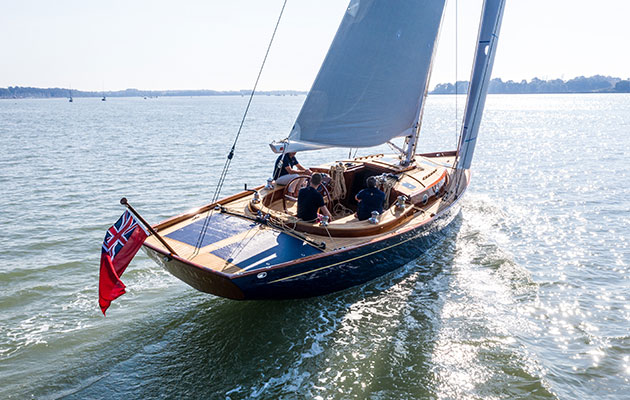
Spirit Yachts 44e – the ‘e’ stands for electric
Additionally electric power and batteries offer the bonus of being able to be recharged via solar panels , a wind turbine or hydroelectric power – via a hydrogenerator mounted on the stern of a boat sailing.
At first glance the electric yacht market could appear in its infancy, but like every revolution, the will of the people is driving forward technology that only a few years ago was seen as the stuff of fantasy.
The market has responded to demand, and battery and motor technology has come on leaps and bounds, driven in part by the rapid development of electric cars.
It may not be commonplace yet, but electric yachting is here, even available ‘off the shelf’, so is it time to get onboard?

The Spirit 111 is a bold hybrid yacht, promising 30 miles motoring under electric power alone. Credit: Ian Roman/Waterline Media
A cutting edge electric yacht
Like Formula One, it’s the cutting edge of electric yachting that trickles down into mainstream production in no time at all.
For Spirit Yachts, a builder defined by a unique blend of traditional and state-of-the-art, electric yachting has been driven by demanding clients that want their yachts to be at the cutting edge.
Spirit Yachts have now produced a number of projects aimed at the all electric luxury yacht market including the Spirit 44e electric yacht and a recent project, the Spirit 111, had all the hallmarks of a superyacht project and the team had to earn their keep delivering to brief.
Managing Director Nigel Stuart explained how it works.
‘The 111 combines several cutting-edge technologies to deliver a something that’s never really been done before. A lithium-ion powered electric drive system can be charged by hydrogenation and also two high-wattage diesel generators.
‘Each generator is 22kw, meaning they can pack a lot of power into the system in a short period of time, they don’t need to run for long to fully recharge.
‘The prop is both a means of drive and power generation, so no separate hydrogenerator is needed. She will be capable of motoring under electric alone for more than 30 miles.
‘When you take on a project that’s electric, it makes you think hard about efficiency so the air conditioning, water heaters and everything in the galley has also been carefully selected to use less power.
‘For her owner there is very little compromise and some major advantages.’
Whilst it’s a long way from the average cruising yacht, the trickle-down effect of projects like the Spirit 111 can’t be underestimated.

Calypso , a Contessa 32, was the yard’s first foray into electric-powered yachts. Credit: Jeremy Rogers
Traditional electric yacht
Jeremy Rogers’ yard in Lymington is the birthplace of the iconic Contessa designs and a veritable temple to long keeled , traditional craft.
Less well known is the yard’s interest in electric auxiliary engines, something they have been involved in for more than 10 years.
Their first project, the refit of a Contessa 32 called Calypso, was an experiment by the Rogers family to see what was possible.
‘ Calypso was a test bed in the technology’s infancy,’ explains Kit Rogers of this early electric boat.
‘Inevitably, we didn’t get it all right, but we learned a lot about the dos and don’ts of electric yachting. The end result was a hybrid. The more we did, the more interesting the project became.
‘It’s not just the obvious, silent peaceful propulsion; it’s also the things you take for granted about a cruising boat. For example, no gas, we didn’t need it because we had electric power.
The yard has also worked on an electric folkboat conversion for a foreign customer.
‘The client, first and foremost, loves to sail. He sees the electric as an auxiliary option, along with the rowing and is excited to own a boat that’s quietly different.
‘He’s looking for a more connected experience and an electric boat helps him achieve it. When you’ve been motoring in and out of marinas under chugging diesel engines for years, the electric motor is something of a revelation.

Arcona has installed solar sails on its latest 380Z electric yacht
Off-the-shelf electric yacht
Perhaps the biggest indication of the future of the electric boat is the willingness of production and semi-production builders to pin their flags to the mast and embrace it.
One of the first was Hanse, who developed a version of their 315 utilising a Torquedo electric pod system.
Providing around the same amount of power as a 10 horsepower diesel, a 4.4kWh lithium ion battery pack powers the system.
Arcona, Dufour, Elan and Delphia also have electric boat models and are each taking their own direction on entering the market.
Arcona’s 380Z (the ‘Z’ stands for ‘zero emission’) fully electric boat has solar panel covered sails, capitalising on the large surface area to top up batteries under sail.
In the multihull market, there is even more scope for solar, wind and hydrogenation due to the horizontal surface area available for solar charging.
What are the options for an electric yacht?
Pure electric.
Purely electric systems can be broadly divided into two categories, high and low voltage.
The latter is the simplest option in terms of how it works and requires less specialist knowledge to install.
Kit Rogers installed a 48v Ocean Volt system in his latest project and remarked on the experience.
‘The advantage of the low voltage system is its inherent lack of complexity. Whilst we’ve coupled it with lithium ion battery technology, it can also be wired up to conventional lead acid batteries. There are pros and cons to both. What surprises everyone is the size, it’s a tiny motor and is surrounded by lots of space where the engine would normally sit.’
High voltage systems are more advanced, and utilising lithium-ion technology, their capacity is improving year on year.
For larger yachts this is generally seen as a better option.
A partnership between BMW and Torqueedo has led to the development of the Deep Blue 315v high voltage battery.
Effectively the same unit as found in the BMWi3 electric cars now often seen on the high street, the system produces a lot of power and is being used on the Spirit 111 project as well as catamarans.
Electric hybrid
One big barrier to entry exists for most potential electric yacht buyers – range.
Even the most advanced set-ups are limited to a maximum of a few hours motoring at cruising speed.
‘The electric motors excel at two things in particular,’ explained Kit Rogers.
‘The first is as auxiliary power for getting in and out of marinas. The second is engaged at low power to very efficiently motor-sail in light airs. If you want to do more than that, at present, you need to add a way of packing in the charge into the battery quickly whilst at sea; which means a generator’ .
As with electric cars and as enthusiasm builds for the technology, a hybrid option, pairing a generator with an electric drive system, is already proving popular and is probably the most practical option for those planning to cruise any distance.
Using a large generator, charge can be quickly put into the system when needed.
Once under sail, the yacht’s propeller becomes a hydro generator, meaning that diesel power is not needed day-to-day.
Solar can also be used to add additional charging capacity.
‘When a fully integrated electric hybrid system is incorporated into a cruising yacht from the outset, its possibilities really become clear,’ explains John Arnold, UK manager at Torqeedo.
‘Sailing for days on end with no engine noise is entirely possible. There are other less obvious benefits too. Electric drives have no long rotating shaft, so can be used as pod drives as well, meaning the boat is far more manoeuvrable than even a yacht equipped with bow and stern thrusters.’

Spirit Yachts 44e
How much does it cost to convert a yacht to electric power?
The technology exists, but anyone seriously considering going electric will want to crunch the numbers.
In the case of taking out a traditional inboard diesel and replacing it with an electric system, it’s relatively easy to work this out.
However, unless you include an auxiliary generator, you will be limited to battery range alone.
For this reason, we’ve done a like for like comparison for a 35ft yacht engine refit, including the cost of a generator to make the system a practical hybrid.
Unsurprisingly, at the moment, there’s a big difference in cost, but at between three to six times the cost, it is gradually coming into the realms of possibility, and prices should continue to drop as technology develops and evolves.
Ocean Volt SD10 Motor system (including batteries, charger and 6kw generator): £30,825.16
Beta Marine Beta 20hp Marine Diesel: £4,100
If you enjoyed reading this….
A subscription to Yachting Monthly magazine costs around 40% less than the cover price .
Print and digital editions are available through Magazines Direct – where you can also find the latest deals .
YM is packed with information to help you get the most from your time on the water.
- Take your seamanship to the next level with tips, advice and skills from our experts
- Impartial in-depth reviews of the latest yachts and equipment
- Cruising guides to help you reach those dream destinations
Follow us on Facebook , Twitter and Instagram.

Propulsion Systems for Multihull
Experience the pleasure of extended anchoring or overnighting without running a generator! The large propulsion battery bank (compared to standard house battery banks) enables much longer silent intervals; you can run all creature comforts (air conditioning, heating, refrigerator/freezer etc...) without the need to run a generator all night.
The Oceanvolt platform is designed and installed to become the complete power solution for the entire boat - including the 12V (or 24V) service power system as well as all other appliances/other comfort equipment (110/220V outlets). Range and recharging are achieved either through hydro generation or through a DC generator which can enable constant long-range cruising or bringing batteries up to a full charge in less than 2 hours.
Hydro generation is particularly suitable for catamarans as twin (or quad) motors means double (or quadruple) the energy. Catamarans also cruise more easily at faster speeds which means that regeneration capabilities are significantly higher (hydro generation capability increases significantly at speeds over 6kn).
Oceanvolt also offers repowering solutions for conversion of existing diesel engines – removing the diesel engine, fuel tanks and exhaust system - cleaning up greasy engine compartments and freeing up both weight and space below deck.
All Oceanvolt systems are engineered to operate at 48 volts for passenger safety and ease of repair. Oceanvolt systems are extremely low maintenance and do not require winterization (no annual engine maintenance costs).
Oceanvolt offers Hybrid or Electric systems in partnership with a wide range of multihull designers and boat builders. Multihull configurations are typically either twin systems or, in the case of larger cats, quad systems.
Twin system configuration
Owner testimonials.
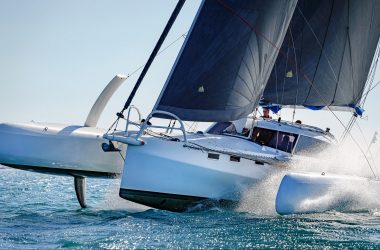
Rapido 40 #7 “NullEins”
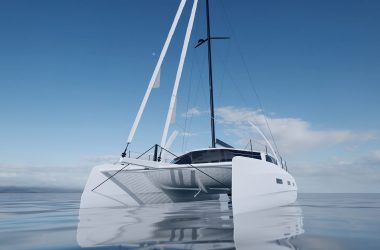
SQ46 Sailing Catamaran
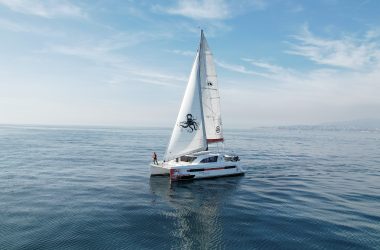
Leopard 40 “Microactivist”
Practical Boat Owner
- Digital edition

Electric sailboat conversion: How my Parker Super Seal went zero-emissions
- Ed Phillips
- April 5, 2022
Ed Phillips embraces zero-emissions sailing by ditching the diesel and converting his Parker Super Seal into an electric sailboat.

Electricity is generated by the engine hydrogeneration system when sailing
Aiming to do our bit for the environment, we recently made a number of lifestyle changes – and one of them was converting our Parker Super Seal yacht into an electric sailboat with the use of an ePropulsion electric motor.
It has proved a great transition in so many ways, taking our sailing experience to the next level. At first it felt a scary, big step into the unknown, but in fact proved a relatively straightforward job.
Skylark is our eco Parker Super Seal. She is an accomplished sailing boat, quick, safe, and fun. She is a joy to sail, we regularly achieve over eight knots through the water.
Our cruising range is generally the South Coast between the Solent and the West Country plus the Channel Islands and France. We have aspirations to take her round Britain , we just need to prioritise the time.
Skylark is primarily powered by sail, a main and genoa (140%) and a couple of asymmetric spinnakers.
Article continues below…

Electric inboard boat motors: 3 yacht owners explain why they made the switch
Just a few years ago there were perhaps half-a-dozen manufacturers making electric outboards. Now there are nearly 40. We covered…

How to convert a classic motorboat to electric power – Ask the experts
Jon Wallsgrove of Sunbury on Thames asks: “Under restoration is my classic 1946 Thames launch that I’d like to convert…

How to choose the right electric outboard engine
Marine electrician Jamie Marley explains what you should look out for when choosing an electric outboard engine for your type…
Leap of faith
Last winter we took the big decision to convert Skylark from diesel to electric propulsion. So her motor is now a 6kW electric engine, with a 9kWh lithium battery, both made by ePropulsion. Leisure power is supplied by Totalcool 12V lithium batteries and solar panels .
Was it a crazy or brave step? Well, somehow taking a perfectly serviceable engine out and going to an emerging technology seemed quite scary, especially when it involved drilling holes through the bottom of your own boat.
Interestingly, having done it, we now feel the most complex part was taking the old diesel out and that if you can put together a piece of IKEA furniture you can convert a yacht to electric. We will never look back, nor go back to a diesel.

ePropulsion pod drive 6.0 Evo 1

The 40 year old Bukh engine before removal
Out with the old
Skylark ’s 40-year-old Bukh 10 engine was still going strong, well bedded-in but was getting expensive to run and maintain. And like all diesels it was not exactly environmentally friendly.
Taking it out wasn’t something to be rushed. Getting the spanners into what is inevitably a very restricted space is an art that takes a while to master.
Persuading the embedded bolts and fixings to loosen is not for the faint hearted. However, a little cussing, the odd cut and much WD40 given time to work seemed to do the job.
In a few hours each day over a couple of days we removed the Bukh. The bits we were worried about, the engine mounts and the drive shaft, turned out to be easier than expected.
The numerous hoses and cables felt a bit ‘Forth Road Bridge’ and seemingly endless, although it was a relatively straightforward task. Just painstaking and on occasions painful.
Having taken everything off the engine the next task was to lift it out. At 140kg this was not a light load. We constructed a frame over the boat using scaffold poles, attached a chain hoist and lifted it gently up and out. It was a dream, all went without a hitch.
Once in the air we had the advantage of having the boat on her trailer, so simply rolled the trailer forward and lowered the engine onto a wheeled pallet. Job done.
With the engine out, there was so much space which got even bigger as we took out the exhaust system. This was actually a genuine ‘five minute job’ and revealed a massive space now used for extra stowage.
Then out came the fuel tank and its attendant tubes and more space gained. But most of all was the joy of saying goodbye to smelly diesel.
Next was to fill the redundant holes in the skin of our ship, the water inlet and outlet, the exhaust outlet. That felt good, the fewer holes in the hull the better!

Drilling holes through the bottom of your boat is a daunting prospect
Finally, the ‘Big Clean’! The bilges of any boat are always a bit grimy, but years of oil and muck warranted a really good scrub. Traffic film cleaner worked well as a degreaser, then loads of soap and water – a task made so much easier knowing that it was the last time our lovely hull would be subjected to those yesteryear hydrocarbons. Hurrah!
Finally we had a clean slate and perfect foundations for the new installation.
In with the new
This proved to be so straightforward, despite being a little daunting at first. Just like IKEA kits, with a good read of the instructions and marshalling the right tools we set to with an engineering chum (to bolster our confidence!)
First, we spent a good amount of time planning. Second, we glassed a 50cm x 50cm marine ply pad onto the inside of the hull, as belt and braces to spread the load of the engine fitting. Essential, no. Diligent, yes. We felt it ensures our engine will be safe and securely mounted for the coming decades.
The ePropulsion Pod engine is totally external and is simply secured to the hull with three 10mm bolts. All that’s required is a 66mm hole for the cables to feed through.

Feeding the cabling through the hull from pod to battery

Shaping the mounting plate to the contour of the hull

Testing the pod’s position before securing it
Carefully working out how and where to position the engine took a good amount of time. We cut off the last 15cm of the drive shaft cowling, otherwise our propeller would have been too close to the rudder. The cutting was easy (in retrospect). Shaping the spacer to the shape of the hull so the engine would sit vertically did take time.
In retrospect, a sharper cutting edge, and more confidence, would make it much simpler next time. Engine fitted, next we moved on board to install the controller, the charger, the morse and the control panel, all very straightforward.
Our top tip – place the control panel in an easy to see position with the instrument cluster on the forward cockpit. The data is really useful and benefits from easy viewing while at sea.

Scaffold pole crane and block and tackle were required to lift the new battery aboard
Next came the battery. Our ePropulsion E175 9kWH battery is compact at 52 x 55 x 27cm although quite heavy at 87kg. It fits perfectly on the engine mounts, the load spread by a piece of marine ply, and takes up only half the space of the old engine.
We lifted it on board using the same chain hoist, lowered it gently into the cabin and slid it forward on an old mountain skateboard that I found in the garage. It was so much simpler than we had dared hope.
Finally, connecting it all up was a steady, logical process that needs to be approached methodically, but it’s not difficult. Then, the big switch on. A press of a button and all springs to life.
I still marvel every time I switch it on. Apart from a few lights, there’s little to show or hear! Push the morse forward and silent, powerful thrust results.
Subsequently, we haven’t looked back and will certainly never go back to burning noisy, smelly, dirty, hydrocarbons with all the damage that they do to our fragile environment.

New battery in situ where the Bukh diesel engine used to be
12V leisure system
Prior to conversion Skylark carried two 12V batteries. These worked well for day sailing, charged by the engine when motoring and trickle charge solar when at rest.
However, with an electric engine there is no alternator so power can get a bit short living aboard after a couple of days out, running instruments, charging phones, lighting etc, without a means of recharging power.
A new solution was required and after much experimentation we have gone for two Totalpower 500 12V lithium leisure batteries, one for the instruments and one for the Totalfreeze fridge. This provides so much power and is easily maintained by the Totalsolar 100 solar panel.

The control box and charger in place behind the battery with lots of stowage space still available
Lithium batteries have many advantages. You can use all the capacity, as opposed to around 50% with lead acid and they can run 240V appliances as well as 12V. In-battery data screens provide all information live.
Weighing only a few kg – less than a quarter of the weight of lead acid batteries – they are much easier to use and so much more versatile.
Wind generation
Currently, we carry an experimental 48V wind generator. So far it is proving most successful. It is powerful, quiet, and neatly out of the way.
The great benefit is that on a swinging mooring, or at anchor, it means we rarely need to use 240V. We are continuing our research into which brands to select until we have enough data to make informed decisions.

Skylark on her mooring in Chichester Harbour
Solar generation
We carry two 12V Totalsolar 100W solar panels This means that we charge the fridge battery in parallel with the leisure batteries. We now have much more 12V capacity than we need – and there is now always ice on tap!
Tenders and paddleboards
To complete our eco set-up our tender has an ePropulsion electric outboard recharged by hydrogeneration and solar. We carry a lightweight ThrustMe engine for runs ashore. Even our Sandbanks Style paddleboards have an electric Vaquita motor, enabling us to always get back to the boat against strong winds and tides.

Tender has an electric outboard engine too
Electric sailboat experience
Some people fear running out of power, but it’s not proving an issue for us. Electricity is generated by the engine hydrogeneration system when sailing. Input is around 100W per knot when sailing between 4 and 10 knots, at the cost of 0.7 knots of boat speed. In addition, we have the wind generator and on occasion 240V mains power.
Solar panels charge the 12V system when living aboard. Skylark lives on a swinging mooring and on the odd occasion when we want to charge from the mains, usually before a long passage, Chichester Harbour Master and MDL Marinas supply 240V electricity free of charge to electric boats at four points around the Harbour (an eco practice worth encouraging).
In reality we rarely use more than a small proportion of the engine’s potential. Skylark weighs approximately three tonnes loaded. We normally cruise at about 975W at just under four knots, which gives over nine hours of motoring.

Silent motoring under engine catches others unawares
A full 6kW gives around eight knots for a much shorter time. We lived aboard for three weeks in the summer, charged just three times (as there was very little wind), and never went below 50% on the battery.
Motor sailing back 29 miles from Southampton Town Quay in under 4 knots of wind, with strong tides both with and against us, we used less than half the battery.
Electric sailboat conversion costs
At the time of conversion we’d retired from the commercial world and had been philanthropists for eight years, gifting our time, so cost management was a critical factor. We spent a good deal of time looking at costs, and the conversion has dramatically reduced our running costs. The logic is as follows:
Bukh annual running costs
I’m a reasonably capable with practical maintenance, however the single cylinder Bukh with its quirky oil seals and gaskets, took me days of work, so it was more practical to work with a professional engineer at a cost of around £300pa for parts and labour, fuel was around £100pa, my morse replacement in its last year was £268, and a new 12V engine starter battery at £120 making a total of £788 spent in 2020.

Pod drive awaiting its prop. New skeg just forward protects the drive from grounding
Electric sailboat running costs
The total cost of the engine set up, including engine battery controller etc. was £6,800. The chain hoist cost £35, 66mm drill bit £12, fuel £0 (free electricity supplies in Chichester Harbour) so total installation cost £6,847. This engine should last for decades.
Assuming a conservative write-down over 15 years, this equates to £456pa. Economically, going electric has been a great decision. It costs around half the annual cost of before, and is so much less damaging to the planet.
Electric sailboat liveaboards
Our three weeks away were an absolute joy – silent eco sailing and silent motor-sailing in the many days of calm we experienced this summer. Everyone stops us wanting to know how we do it, as we silently cruise past 38-footers!

Electrical power is generated while sailing
Range anxiety? We are totally over it! We did passages of up to 40 miles in little wind and didn’t use more than 50% of our battery capacity.
We motored from the Solent into Poole Harbour where we spent several days pottering and stand-up paddleboarding, only charging from shore power prior to embarking on our next long passage as due diligence, since the calm weather had limited our wind generation.
We have found that, as with all electric engines, there is a huge amount of torque giving fabulous manoeuvrability and the joy of silent motoring.
At steady speeds she uses very little power, then faster speeds seem to push the effort up on a roughly cube basis. This is great at encouraging us all to be traditional and work with the wind and tides not despite them.
Having an electric engine also totally changes the way one sails, tacking up wind with just 2-300W gives an extra couple of knots and an additional 10° of pointing angle (as the apparent wind shifts), and all this silently. Wow!
Electric sailboat conversion: What we learned
Switching to lithium.
We haven’t found anything to fear and it takes our sailing to the next level. The one thing that took us a while to suss out was how to run our leisure systems as lead acid batteries only last a couple of days with no alternator on hand!
Our learning was to ditch lead acid in favour of lithium, a quarter of the weight and you can use all the battery power, not just 50% of it. We now have so much power that we happily run a TotalCool fridge solar charged.
We will never go back to hydrocarbons. Going electric is such an all-round better experience as well as making a significant difference to the fragile marine environment. Downsides? The only one we’ve found is that folk joke they’re reluctant to race us, as they can’t tell if we’re running the engine!
Looking to switch to an electric outboard engine ? Click here for advice on how to choose the right engine for your type of cruising
Why not subscribe today?
This feature appeared in the April 2022 edition of Practical Boat Owner . For more articles like this, including DIY, money-saving advice, great boat projects, expert tips and ways to improve your boat’s performance, take out a magazine subscription to Britain’s best-selling boating magazine.
Subscribe, or make a gift for someone else, and you’ll always save at least 30% compared to newsstand prices.
See the latest PBO subscription deals on magazinesdirect.com
- Motor Boats
- Motor Boats with Keel
- Boats with Inflatable Floor
- Yacht Tenders
- Rowing Boats
- Pontoons & Catamarans
- Rigid Inflatable Boat (RIB)
- Electric Boats
- Electric Surfboards
- Plastic Boats
- Aluminum Boats
- Water Bikes
- Tohatsu Outboards
- Electric Outboards
- Outboard Accessories
- ePropulsion Outboards
- Elco Outboards
- Parsun Outboards
- Rim Drive Technology
- TEMO Outboards
- ThrustMe Outboards
- ePropulsion Accessories
- TEMO Accessories
- ThrustMe Accessories
- RIM DRIVE Accessories
- Electric Batteries
- Outboard Motor Controls
- Outboard Motor Bags
- Outboard Cables
- Inboard Motors
- Anchor Lock
- Boat Tables
- For Recreation
- For Echo Sounder
- Gadget Holders
- Hinged Transom
- Mounting Kits
- Navigation Lights
- Power Stations
- Outdoor Equipment
- Classic Jigs
- Epoch Batteries
- Solar Panels
- Solar Lamps
- Portable Electric Coolers
- Mooring Tackles
- Portable Solar Ovens
- Portable Water Purifier Stations
- Accessories For Recreation
- Sailboat Steering Wheels
- Power Boat Steering Wheels
- Boat Gangways
- Boat Flagpoles
- Electricats
- All Around SUP
- Fitness SUP
- Touring SUP
- RIM Drive Outboards
- Anodes for ePropulsion Outboards
- Batteries for ePropulsion Outboard Motors
- Chargers for ePropulsion Outboards
- Motor Bags for ePropulsion Outboards
- Cables for ePropulsion Outboards
- Controls for ePropulsion Outboards
- Propellers for ePropulsion Outboards
- Electric Boat Conversion and Repower Services
- Payments / Shipping
- Warranties and Returns

March 26, 2024
Effortless Guide to Convert Outboard Motor to Electric: Embrace Quiet, Clean Power on the Water
Wondering how to convert an outboard or inboard motor to electric? This no-nonsense guide walks you through the conversion—from understanding the eco-friendly and cost-effective gains to executing the technical switch for both outboard and inboard systems. Equipped with practical steps and expert tips, your transition to electric boating starts here, promising a quieter, cleaner ride on the waves.
Key Takeaways
- Converting an outboard motor to electric reduces emissions, noise, and maintenance while offering instant torque and cost savings, especially amidst rising environmental regulations that favor such technology.
- The conversion process involves meticulous planning, choosing the right electric motor system, complying with local regulations, and ensuring proper installation and integration for optimal boat performance.
- Post-conversion considerations for electric boats encompass choosing reputable brands for quality, understanding battery and charging options for sustained operation, adhering to safety standards, and performing regular maintenance for durability.
Why Convert Your Outboard Motor to Electric?

In sync with the current environmental consciousness, electric outboard motors are gaining momentum as viable alternatives to traditional combustion engines for various boat types. Organizations such as Navigator Inflatable Boats are championing this shift, educating and promoting the integration of cleaner alternative energies into everyday boating practices, including the use of electric boat outboard and electric inboard motors.
The appeal of electric propulsion is clear:
- Zero emissions
- Absence of noise and smell
- Less maintenance due to fewer moving parts and direct-drive technology.
This shift is even more pronounced in regions with restrictions on internal combustion engines, where the use of electric outboard motors is on the rise, indicating a significant shift towards more environmentally friendly boating solutions.
But the allure of electric conversion extends beyond its environmental benefits. The performance advantages and cost savings offered by electric boats make it an attractive option for boat owners. We will now explore these advantages in greater detail.
Environmental Benefits
Electric outboard motors are a breath of fresh air, literally. They eliminate exhaust emissions, contributing to cleaner air by preventing the release of harmful substances such as:
- carbon monoxide
- hydrocarbons
- particulate matter
- nitrogen oxides
This ensures a pollution-free environment, benefiting both passengers and surrounding wildlife.
Additionally, these motors improve water quality as they operate without fuel and minimal oil, significantly reducing the chances of water pollution. Combining this with the integration of solar panels into the electric boating system , a sustainable and eco-friendly approach is forged, harnessing renewable energy to charge batteries.
The use of lithium-ion batteries further positively impacts water quality and causes less environmental stress.
Performance Advantages
From the moment you push the throttle, electric motors display their superiority. They provide:
- Instant torque , leading to responsive acceleration and powerful performance from the get-go.
- Enhanced maneuverability.
- Instant starting , without the need for a warm-up time.
This simplifies the boating experience and ensures a seamless and efficient ride.
The advantages of electric propulsion include:
- The silence of the electric propulsion , offering a peaceful boating experience without compromising power.
- Highly energy-efficient electric motors, converting more input energy into motion with minimal waste as heat.
- Cost-effective operation over time.
- Torqeedo electric motors standing out for their efficiency, offering an extended range for longer trips on the water.
Cost Savings
Beyond the performance and environmental benefits, the transition to electric boats is a financially sound decision. Electric motors offer several advantages in terms of maintenance and cost:
- Electric motors, devoid of traditional gearboxes, experience reduced wear and tear , resulting in fewer maintenance needs.
- The simplicity in design , like the patented Gearless technology, means electric motors require less frequent maintenance than their gasoline counterparts.
- Routine maintenance tasks such as oil changes and spark plug replacements are not necessary for electric boat motors, further diminishing overall maintenance costs.
The cost benefits of electric outboard motors include:
- Considerable fuel cost savings over time compared to traditional petrol outboards.
- Absence of ongoing expenses like annual maintenance fees and fuel costs
- Recouping of the initial investment.
- Cumulative savings in fuel, maintenance, and operating expenses over the hours of operation.
These benefits can surpass the initial higher cost of electric boat motors.
Conversion Process: Step-by-Step Guide
Having understood the reasons, it’s time to understand the process. Converting your outboard motor to electric may seem daunting, but with some planning and the right approach, it’s a manageable process. Start by researching all local regulations and compliance standards related to marine electrical systems. Acquire a thorough understanding of the system components like the motor controller , throttle , and battery management system .
Choosing the right electric motor system is a crucial part of the conversion process. Look for one that meets ABYC standards at a safe 48Vdc low voltage. This should include components such as a key switch, neutral locking throttle, and a battery monitor display indicating state of charge, voltage, motor speed, and power consumption. However, before making this decision, it’s crucial to evaluate the requirements of your boat.
Assessing Your Boat's Needs
The first step in the conversion process is assessing your boat’s needs. The power of the electric motor should be enough to handle heavy seas or wind gusts, balanced with considerations of battery size and cost. Keep in mind that propeller efficiency and mechanical and motor controller losses can result in less than half of the consumed power being used for actual propulsion.
Estimating power requirements can be done by:
- Comparing with the current thermal engine’s power
- Consulting boat manufacturer resistance curves
- Using theoretical calculation tools for power curves in varying sea conditions
A baseline for battery size can be a 1:1 ratio between kW of engine power to kWh of battery capacity, with scalability for expansion, particularly for LiFePO batteries. For small boats, carrying a portable generator as a safety backup is advised.
Choosing the Right Electric Motor System
Having assessed your boat’s needs, the next step is choosing the right electric motor system. Electric motor power is measured in pounds (lbs) or kilowatts (kW), with electric motors providing up to 8 hp, indicating suitability for calm water usage. The boat’s laden weight determines the power requirement from the electric motor, which varies with different boat types and sizes in terms of lbs to horsepower equivalence.
Aside from power, the battery capacity, measured in ampere-hours (Ah), must match the motor’s power to avoid rapid battery depletion, especially under continuous maximum speed operation. The weight of the battery has a significant impact on boat performance and range, emphasizing the need for careful selection to align with the electric motor system. A compact and lightweight electric motor design contributes positively to the boat’s overall performance and eases the process of installation and transportation.
Implementing a variable voltage regulator can increase system efficiency by up to 50%, but may also add to the cost of the electric motor system.
Installation and Integration
Once you’ve chosen the right electric motor system, the next step is the installation and integration process. This may involve adapting the boat’s design to accommodate the electric motor system, which may involve modifying the transom or building custom mounts for batteries and electronics. The weight of batteries and motor should be balanced to maintain the boat’s center of gravity and stability, which may require redistributing other equipment or adding ballast.
The installation process also involves managing power distribution. Here are the steps to follow:
- Install a marine-grade main battery disconnect switch to manage power and ensure the ability to turn off everything at once or combine batteries for charging.
- Use a terminal block as a breakout point for switch outputs.
- Use a bus bar to complete the circuits, connecting all positive wires from the switch panel to the appropriate gang on the terminal block, and all negatives to the bus bar.
By following these steps, you can effectively manage power distribution in your installation.
Understanding the boat’s existing wiring infrastructure is crucial to correctly connecting the new electric motor system, ensuring all loads are properly powered and grounded. To do this, follow these steps:
- Implement correct electrical wiring and grounding using marine-grade materials.
- Insulate circuits with appropriate protection devices like fuses and circuit breakers to prevent overloads.
- Install adequate ventilation for battery compartments to prevent the accumulation of gases and ensure proper cooling.
- Use thermal management solutions to regulate the temperature of batteries and electric motors.
- Equip the boat with a fire suppression system in areas where batteries and electrical systems are housed.
By following these steps, you can ensure a safe and efficient electric motor system installation.
Top Electric Motor Brands for Conversions
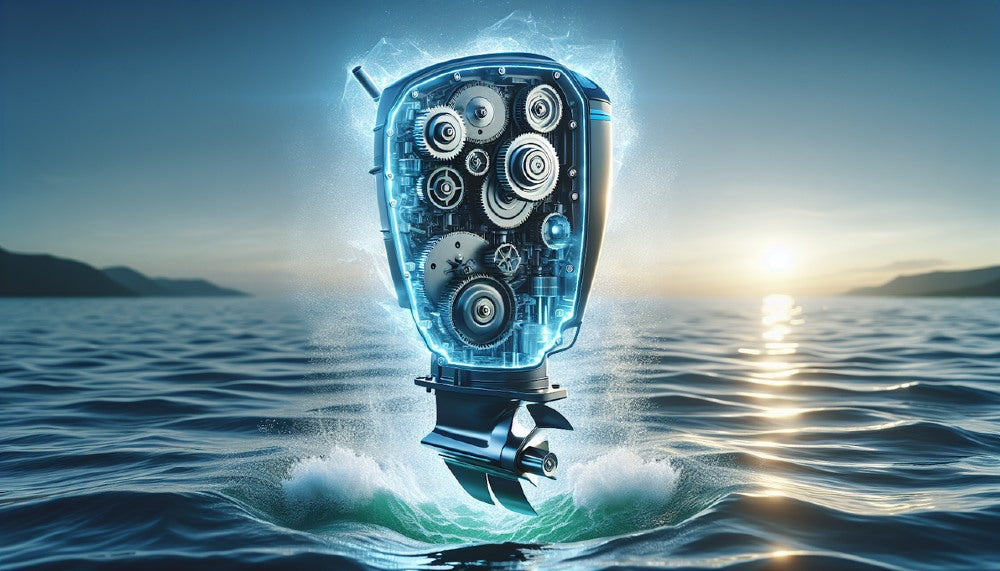
Choosing the right brand for your electric conversion can make a significant difference in your boating experience. Top brands like ePropulsion, Torqeedo, and Oceanvolt offer a range of options for various boating needs and have been recognized for their commitment to quality and innovation in the field of electric propulsion.
Furthermore, brands like Navigator Inflatable Boats demonstrate their commitment to electric boating through the conversion of their own gas-powered inflatable boats into fully electric vessels , and selling “plug and play” conversion options to simplify the conversion process. Next, we’ll explore the offerings of each of these brands.
ePropulsion
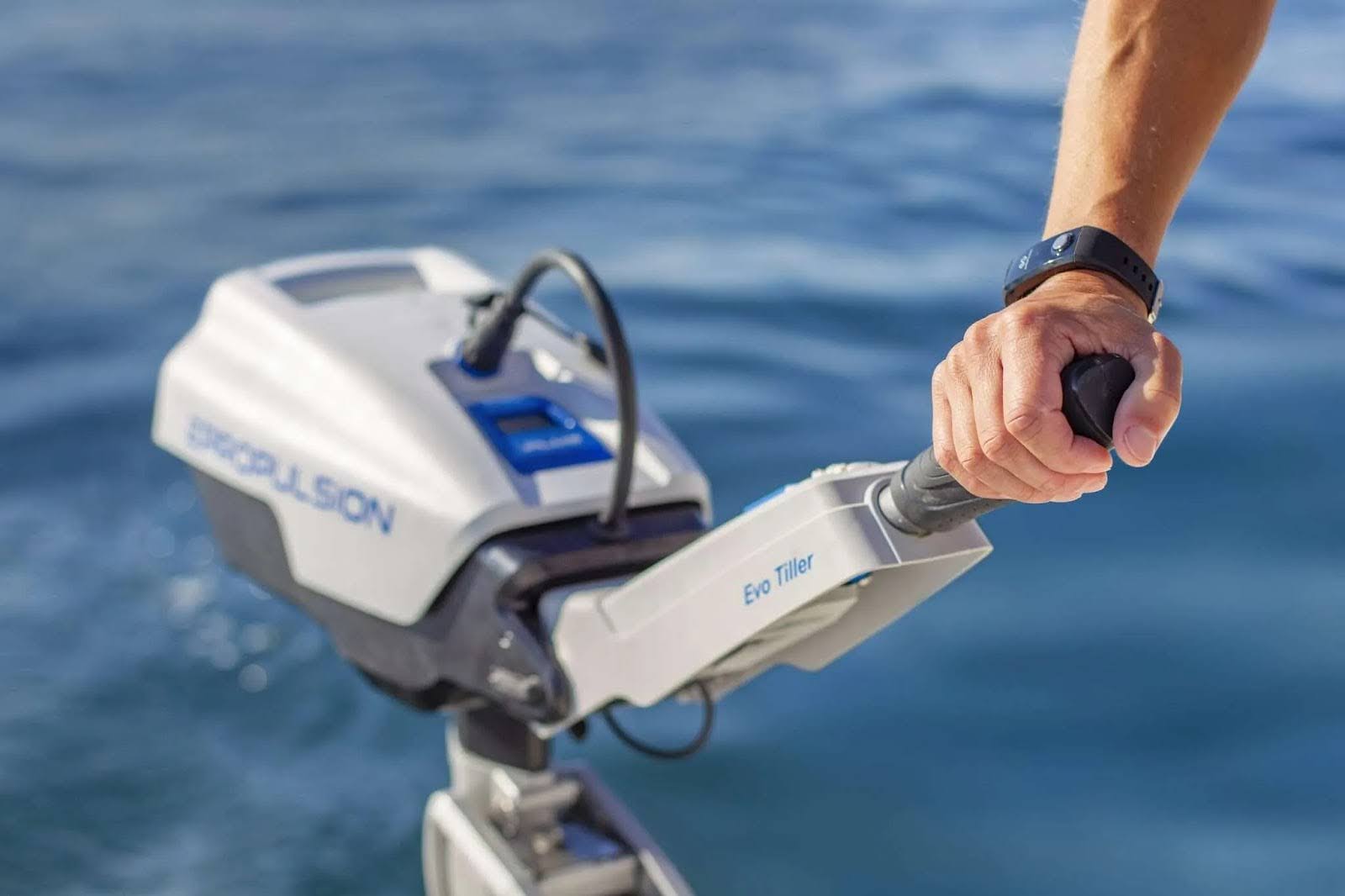
ePropulsion specializes in electric marine propulsion and offers a range of electric outboard and pod drive systems for various boating needs. The ePropulsion range includes the Navy series suitable for a broad array of boats and offers additional higher power options catering to larger vessels.
Aside from offering a variety of power options, ePropulsion motors are equipped with a direct drive system that eliminates transmission losses for increased efficiency. For smaller crafts, the Spirit 1.0 Plus model offers portability and ample power, making it a popular choice among small boat owners.
Torqeedo is another brand that stands out in the realm of electric outboard motors. Torqeedo electric motors, including trolling motors, are effective substitutes for thermal engines in calm water environments, illustrating a closing performance gap. The brand’s Cruise series provides flexible boat handling with models that feature remote throttle or tiller controls.
What sets Torqeedo apart is their focus on optimizing their products for either increased thrust or higher speed, depending on the model. They also cater to specific needs, like their Ultralight series designed specifically for kayak enthusiasts, offering a lightweight and efficient propulsion option.
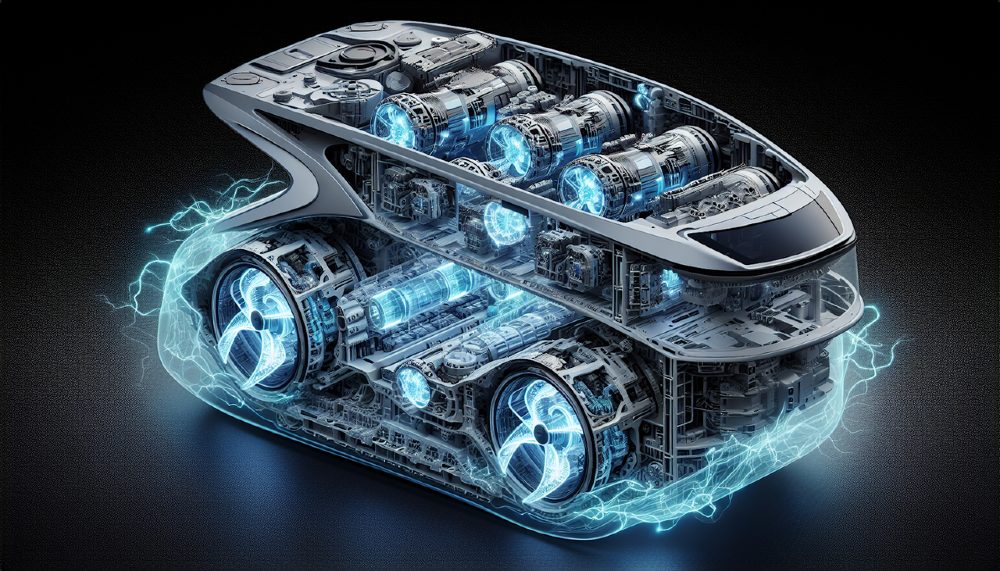
Oceanvolt is a company that specializes in hybrid and electric marine power and propulsion systems, offering zero emissions, no exhaust, no noise, and no smell. They offer a seamless system integration with integrated components, aided by skilled technicians for compatibility and optimized software.
The AXC series from Oceanvolt provides modular electric motors that can be combined to meet higher power requirements for larger boats. Oceanvolt systems are engineered to integrate smoothly with existing boat controls, facilitating ease of transition to electric propulsion for boat owners.
Temo is emerging as a versatile player in the electric outboard motor landscape, focusing on the needs of medium-sized watercraft. Their signature product, the Temo 450 , is designed for dinghies, tenders, and small sailboats, offering an innovative approach to portable propulsion. With an emphasis on ease of use and lightweight design, Temo's solutions are gaining popularity among sailors and casual boaters seeking a convenient, eco-friendly alternative to traditional petrol outboards.
ThrustMe propels the electric boating market forward with its advanced outboard solutions tailored for medium-sized boats. Their commitment to innovation is evident in their ThrustMe Kicker 1000W series , which provides boaters with a powerful yet silent propulsion system. Designed to be user-friendly and maintenance-free, ThrustMe motors are an excellent choice for those looking to upgrade their boating experience with electric technology.
RDT makes a splash in the electric boating world with compact and efficient propulsion systems. Their focus on small-scale boats has led to the creation of the RDT Mini, a motor known for its reliability and ease of installation. Ideal for kayakers and owners of small inflatables, RDT's products are a testament to the potential of electric power in enhancing the simplicity and enjoyment of water-based activities.
Bluenav enters the arena with their specialized electric propulsion systems designed for small to medium-sized boats. Their commitment to sustainability and marine conservation is reflected in their Bluenav Cruiser series, which offers a clean and quiet boating experience without compromising on power. With a focus on innovation and eco-friendliness, Bluenav is quickly becoming a go-to choice for environmentally conscious boaters.
Rad Propulsion
Rad Propulsion is revolutionizing the way we think about electric boat motor, particularly for small watercraft. Their Rad Mini series boasts a sleek design and impressive efficiency, making it a favorite among eco-friendly adventurers. With a dedication to creating motors that are both powerful and portable, Rad Propulsion is propelling the boating industry into a new era of sustainability. Their innovative approach ensures that even the smallest boats can enjoy the benefits of electric propulsion, offering a clean and quiet experience on the water. Whether you're navigating serene lakes or coastal inlets, Rad Propulsion's technology is engineered to enhance your journey with minimal environmental impact.
Battery and Charging Options
A significant part of your electric conversion journey is understanding the battery and charging options for electric boats. The environmental impact of the sourcing and disposal of batteries for electric boats warrants consideration - with an emphasis on adhering to proper recycling methods for sustainability and safety.
When it comes to powering your electric boat, two primary factors need attention: the kind of batteries you will use and their charging methods.
Lithium-Ion Batteries
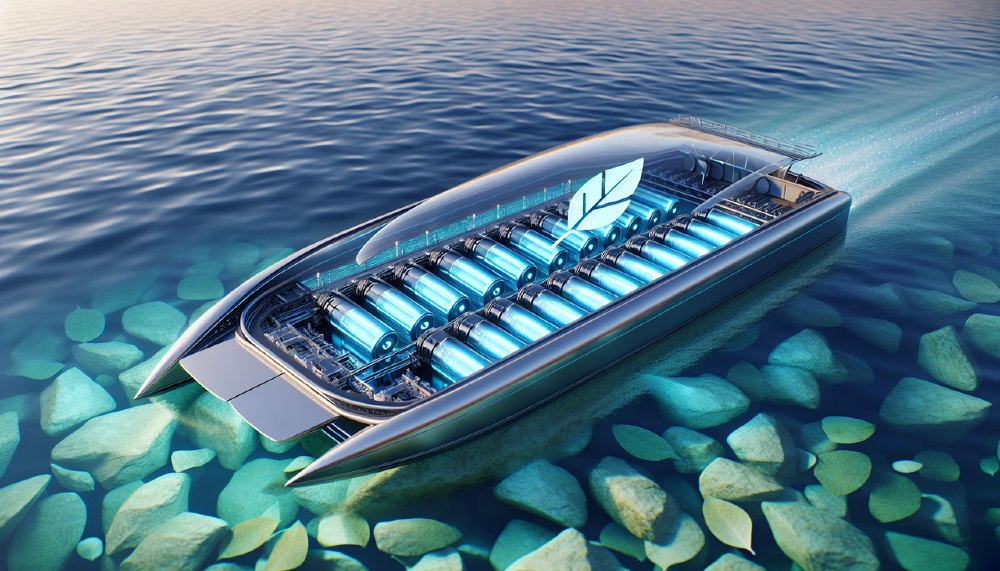
Lithium-ion batteries are the preferred choice for electric boats due to their:
- Superior capacity
- Higher efficiency
- Longer life cycle
- Lighter weight
Compared to other battery types. These batteries are known for their high-quality energy storage, effective current delivery, resilience in charge capacity, and dependable performance across a wide temperature range.
While the initial cost of lithium-ion batteries is higher, the long-term benefits in terms of performance, lifespan, and maintenance make them a cost-effective choice in the long run.
Charging Methods
Charging your electric boat can be done through various methods, providing flexibility and renewable electric power options. Electric boats can be charged via AC power using standard 120V or 240V outlets, with 240V outlets charging significantly faster, sometimes in combination with DC fast chargers for even quicker turnaround times.
For a more sustainable approach, solar power charging provides a renewable energy source for electric boats, often enhanced with Bluetooth monitoring for performance tracking. Another innovative charging method is through hydrogeneration technologies, which use wind and sailing movement to generate electricity, offering increased range and efficiency.
Regardless of the method chosen, planning for access to charging infrastructure, such as on-shore facilities or onboard generators, is crucial for optimizing an electric boat’s continuous operation.
Tips for a Successful Conversion
The road to a successful conversion is paved with careful planning and informed decisions. Quality and innovation of electric propulsion systems are evidenced by industry awards, such as the HighPower ServoProp 25 by Oceanvolt winning the DAME Design Awards at METSTRADE 2023. For a successful conversion, seeking advice and working with a team composed of certified electricians, master installers, and experienced engineers is beneficial, as their expertise can significantly simplify the process.
Choosing equipment from brands that demonstrate their commitment to the field can help ensure ongoing support and quality products. However, before initiating the conversion, you should decide whether you want to undertake the task yourself or engage a professional.
DIY vs. Professional Installation
The choice between DIY and professional installation depends on your technical skills and the complexity of the conversion. Before choosing to DIY, evaluate the complexity of the electric outboard motor conversion and consider if one’s technical skills are sufficient, especially for complex systems with high-voltage batteries which may be better serviced by professional expertise. A DIY conversion may be more cost-effective but requires a substantial time investment and the readiness for trial and error.
On the other hand, professional installation offers the convenience of expertise and specialized tools that can facilitate a high-quality conversion, as well as save time in troubleshooting issues, but this comes at a higher cost.
Maintenance and Care
Just like any other machinery, electric boats require regular maintenance and care. Here are some tips to keep your electric boat in top shape:
- Monitor battery health by checking voltage and charge levels regularly. Follow the recommended maintenance schedule provided by the battery manufacturer.
- Regularly inspect and maintain electrical connections to prevent corrosion and ensure optimal performance of the electric motor.
- Inspect the propeller for debris or marine growth and clean as necessary for performance and efficiency.
By following these maintenance tips, you can ensure that your electric boat stays in great condition for years to come.
Proper storage of the motor during the off-season in a dry, secure location is crucial, and ensure the motor is clean and dry before covering. Training operators in the handling and operational characteristics of electric boats, including emergency procedures and battery management, is also crucial.
Lastly, carry a portable generator as a backup to offer a safety net for a low-speed return to port if batteries are depleted. Schedule periodic inspections of the electric system by qualified technicians to ensure peak efficiency and early issue detection.
Safety Considerations
Safety should always be a primary concern when dealing with electrical systems. A boat’s wiring system should have circuit protection for every non-engine wire to prevent potential hazards like fires from overheated wires. The systems operate on a 48V architecture, minimizing high voltage risks and ensuring safe installation and operation.
Use only marine-rated components in the conversion, as they are designed to withstand the harsh marine environment and prevent electrical failures. Ensure that all electric system installations and repairs are performed in accordance with the American Boat and Yacht Council (ABYC) standards to maintain safety on the water.
Install a main electrical power shut-off switch that is easily accessible in case of an emergency to quickly disconnect the electric motor from the power source. Familiarize yourself with the correct operation of the electric propulsion system, including starting procedures, emergency stops, and what to do in case of a power loss.
Converting your outboard motor to electric is not just a trend; it’s a shift towards a more sustainable and efficient way of boating. The benefits of electric conversion are numerous, ranging from environmental advantages to improved performance and cost savings. With advancements in technology and a variety of options available from top brands like ePropulsion, Torqeedo, and Oceanvolt, now is the perfect time to make the switch.
Remember, the journey of a thousand miles begins with a single step. Start by assessing your boat’s needs, choose the right electric motor system, and ensure proper installation and integration. With careful planning and informed decisions, you can join the electric revolution and embrace the quiet, clean power on the water.
Frequently Asked Questions
What are the environmental benefits of electric outboard motors.
Electric outboard motors provide environmental benefits by eliminating exhaust emissions, reducing water pollution, and offering the opportunity to integrate with renewable energy sources for charging batteries. This makes them a cleaner and more sustainable option for watercraft propulsion.
What are the performance advantages of electric outboard motors?
Electric outboard motors offer instant torque for responsive acceleration and powerful performance, as well as quiet operation and high energy efficiency, enhancing the overall boating experience.
What cost savings can be expected with electric outboard motors?
Electric outboard motors can offer considerable cost savings over time, including reduced fuel and maintenance expenses, which can ultimately exceed the initial higher cost of the electric motors.
How do I choose the right electric motor system for my boat?
When choosing an electric motor system for your boat, consider the power requirements, battery size, and motor weight to ensure it can handle various conditions and avoid rapid battery depletion. Consider the length and the dry weight of your vessel, how many people and weight it should carry, the mileage needed to be covered and access to shore power. A common question is: how long may I operate the motor? Based on the battery bank installed you can extend your voyage by two or three times. Depending on the inputs, one or the other electric outboard or inboard system might work best. If you're not sure, our team would be glad to guide you through available options and recommend the best fit.

What are some top electric motor brands for conversions?
Consider choosing from brands like ePropulsion, Torqeedo, and Oceanvolt for your electric motor conversion, as they are known for their quality and innovative products in the boating industry.
- Choosing a selection results in a full page refresh.
- Press the space key then arrow keys to make a selection.
- Use left/right arrows to navigate the slideshow or swipe left/right if using a mobile device
Your cart is currently empty.

No products in the cart.
- Electric Boat Conversion Kit (E-Boat)
E-Boat Conversion Kit
We offer a full vehicle conversion kit to make your boat go electric. Our offer includes a kit with or without the installation service with a warranty of 2 years.
EV Products
Please contact us if you are interested in our products or if you want to schedule a test drive in our EV.
EV Conversion Kit for Boat
We offer the most complete vehicle conversion kit to make your boat go full electric. Our kit can be assembled by anyone with the needed tools. We also provide full documentation and video instructions for an EV conversion.
Our offer includes an EV conversion kit with or without the installation service with a warranty of 2 years on all parts.
Our EV Conversion Kit includes: EV Motor, Controller, Lithium battery pack, Accelerator, DC-DC converter 12V, Charger, Emergency stop switch, Air conditioning assembly, Motor & Battery mount parts and other parts depending on the boat type.
Our offer includes a kit with or without the installation service with a warranty of 2 years.

Why are we better?
Our EV Kits are designed to be the best and most affordable EV kits for any boat type. Our interest is to have a high number of boats converted into EVs and that is possible only by providing a full kit for an affordable price.
We want to be the most reliable EV kit provider by offering you many benefits that nobody else has. That is why we include a 2-year warranty on all our parts and we also have a stock of all spare parts in our local warehouse.
Even years after of expired warranty, you can get any spare part at the best price or you can even upgrade your vehicle with more power or a longer range.

01. EV kit Installation
02. ev kit installation partners.

Test our demo vehicle before you buy the EV kit
As we want to provide you with the best satisfaction and the real experience before you purchase an EV kit we have prepared the test vehicles which you can use for a test drive to help you decide about your conversion to EV.

Why convert your boat into an Electric?
By converting your boat into an EV you have multiple benefits like you can charge it at home, you don’t need to have yearly oil and filter replacement service, there are much less parts in an EV so it doesn’t break like a normal petrol/diesel engine, you can keep your existing boat which you like and run it with zero CO2 emissions.
Save Your Money
Zero co2 emissions, keep your boat, frequently asked questions, latest projects.

EV Conversion VW Polo 2004

EV Conversion of Citroen Dyane DAK

EV Conversion of Citroen 2CV

Discover Independence For EVs Through Using The Power Of Solar Panels!
We offer products, solutions, and services across the entire energy value chain. We support our customers on their way to a more sustainable future – no matter how far along the journey to energize society with affordable energy systems.
- Reliability
- Energy Independence
- Free driving
- Environment friendly
- Warranty on all parts
Receive an accurate quote within 1-5 days when you fill out this form.
Get In Touch
We take great pride in everything that we do, control over products allows us to ensure our customers receive the best quality service.
The Pros, Cons, and Future of Electric Yachts and Sailboats
- By Sail Greener
- Last updated: April 27, 2022

Sail Greener is supported by our readers. When you buy through links on our site, we may earn an affiliate commission.
If you sail you likely spend considerable time—and money—cleaning, fixing, and worrying about your diesel or gas engine. When it comes to safety, your backup propulsion is as important as your sails. Can you rely on electric motors for safety? What are the pros and cons of buying an electric sailboat?
Diesel engines are reliable, but they pollute. Diesel (and gas) engines emit greenhouse gasses and exhaust that includes particulate matter and carcinogens that are a risk to human health.
Until recently, alternatives to marine diesel engines were limited. Boat owners could carry out their own repower projects or purchase expensive commercial electric motors. Storage capacity was a problem.
Fortunately, the winds are shifting and there are now numerous high quality and economically competitive alternatives to traditional marine engines. In this article we describe the pros and cons of purchasing a new motor or repowering an existing engine. We also describe the market for marine electric propulsion systems and identify leading boat builders, manufacturers, and installers.
Why do we need electric sailboats?
The climate is warming and we continue to pump greenhouse gasses into the atmosphere at a torrid pace. Transport emissions, including road, rail, air and marine transportation, account for nearly a quarter of global CO 2 emissions. 1 https://www.ipcc.ch/report/ar5/wg3/transport/ According to the United Nation’s International Maritime Organization , marine traffic accounts for nearly 3% of the world's CO 2 emissions.
While emissions from recreational boaters are less than those from shipping and fishing fleets, they are still considerable. According to an estimate from electricmotoryachts.com , if just 5% of the roughly 13 million registered boats in the United States today repowered with electric, boaters would eliminate an estimated 1 billion pounds of CO 2 emissions. Scaled across boaters around the world, the potential for boaters to meaningfully reduce greenhouse gas emissions is significant.
Exposure to diesel emissions also poses health risks. The smallest particulate matter can contribute to heart attacks, strokes, and lung disease. High exposure to small particulates can impair brain development in children. The International Agency for Research on Cancer , part of the World Health Organization (WHO), classifies diesel engine exhaust as carcinogenic to humans.
Is there a market for marine electric propulsion?
Global concern over climate is leading to a revolution in how we produce and use renewable energy. This is particularly true in the transportation sector. Sales of electric cars in 2019 increased 40%. In 2020, Tesla motors alone produced almost 500,000 new electric vehicles. This helped to propel Elon Musk to become the world’s wealthiest person. Electric vehicle penetration is still just about 3% but growing dramatically 2 https://www.mckinsey.com/industries/automotive-and-assembly/our-insights/mckinsey-electric-vehicle-index-europe-cushions-a-global-plunge-in-ev-sales# A key factor driving this growth, according to the European Patent Office (EPO) and the International Energy Agency, is innovation in rechargeable lithium-ion batteries and other storage technology. Batteries now account for nearly 90% of all patenting activity in the area of electricity storage. Between 2005 and 2018, patenting activity in batteries and related electricity storage technologies grew four times faster than the average of all technology fields. 3 https://www.iea.org/reports/innovation-in-batteries-and-electricity-storage
It is clear we are reaching a tipping point for electric automobiles and trucks 4 https://www.theguardian.com/environment/2021/jan/22/electric-vehicles-close-to-tipping-point-of-mass-adoption . Is the marine sector also experiencing an electric revolution?
The market for marine electric propulsion systems is lagging what is happening with cars and trucks. However, the potential for growth in this sector is extraordinary. In an article published in Yachting World, Christoph Ballin, CEO of electric motor manufacturer Torqueedo, estimated that only about 1.3% of marine propulsion systems are electric. 5 https://www.yachtingworld.com/features/future-yachting-smart-technology-126136 According to an article published in 2017 by IDTechEx there are over 100 manufacturers of electric boats and ships with an estimate of more than $20 billion in global sales by 2027 for non-military boats. According to the IDTechEx report, recreational boats are the largest—and fastest—growing electric marine market by sales.
The growth potential is enormous considering the size of the recreation economy. In the United States alone, in 2019 outdoor recreation generated US$ 788 billion dollars in output. 6 https://boatingindustry.com/news/2020/11/12/orr-provides-breakdown-of-latest-recreation-economy-data/ An estimated $37 billion of this came from retail sales of boats, engines, accessories and marine services. According to the U.S. Bureau of Economic Analysis (BEA) Outdoor Recreation Satellite Account (ORSA) data, Boating and fishing was the largest conventional activity for the nation as a whole, adding US$ 23.6 billion to the economy. This was the largest conventional activity in 30 states and the District of Columbia and the second largest activity in 11 states. 7 https://boatingindustry.com/news/2020/11/12/orr-provides-breakdown-of-latest-recreation-economy-data/
Pros and Cons of Electric Motors for Boats
What are the pros and cons of electric motors for sailing?
Pros of electric propulsion
- Less noise : Electric motors are quieter than diesel engines and nearly vibration free.
- Lower long-term cost : Motors last a long time and require no fuel. You need batteries and electricity, but the sun and wind can recharge your batteries. You won't need to constantly change engine fluids, filters, or worry about leaks or old tanks.
- Cleaner and healthier: You won't end up with an oily mess in the engine room and bilge
- No emissions, no exhaust : Passengers and crew won't be exposed to hazardous fumes and particulates. You won't be spewing out carbon pollution.
- Instant power: Electric motors can go from zero to full torque instantaneously. Motors do not need to wait for engines to warm up.
- Weight and storage : Electric propulsion systems are typically less heavy than equivalent diesel systems. OceanPlanetEnergy.com estimates that electric propulsion systems are typically 1/3 the weight of diesel systems. This depends, however, on the weight of your battery bank.
- Easier maintenance and lower costs: Electric motors are simpler and easier to maintain than diesel generators. OceanPlanetEnergy.com estimates that maintenance costs could be 1/20 of the maintenance costs of a diesel engine in the first decade, even less over time because of electric propulsion systems use far fewer moving parts.
- Increased reliability and safety : Fewer moving parts translates into fewer breakdown which means which means more safety.
- Regeneration: Batteries can be recharged while sailing using, solar, wind, and hydro generation systems. For example, at sailing speeds over 6 knots Oceanvolt systems are reportedly able to generate significant power for recharging the battery bank.
- Improved maneuverability: Electric motors have high torque at low RPM, which can make maneuvering in tight spaces like marinas more precise. Electric motors can switch from forward to backward instantaneously.
Cons of electric propulsion
- Range anxiety: Depending on your battery bank and ability to recharge, you may have less range with an electric motor compared to a diesel engine.
- Cost: Electric motors can be expensive relative to combustion engines, but costs are plummeting.
- Lack of familiarity : Sailors familiar with traditional engines may not feel prepared or comfortable to switch to a new form of power.
- Fires: There can be a small risk of fires from batterie with improper maintenance, but this is also true with internal combustion engines.
- Charging time: Recharging batteries can take time, but charging times are changing quickly. Tesla V3 Superchargers support peak rates of up to 250kW per car, which translates to about 75 miles of charge in 5 minutes for a Model 3 and charge at rates of up to 1,000 miles per hour 8 https://www.tesla.com/blog/introducing-v3-supercharging . In January 2021 the Israeli company StoreDot announced new “exreme-fast-charging” lithium-ion batteries that could charge a car battery capable of 100 miles of charge in 5 minutes. It will only be a matter of time before similar speed and capacity is available for boaters.
Industry Leaders
Who are industry leaders in the electric sailboat space?
Electric propulsion companies
Numerous companies produce electric and hybrid propulsion systems for the marine sector. Some of the best known and highest quality brands that provide electric propulsion systems for yachts and sailboats include:
- Elco Motor : Elco is one of the industry leaders in this field. The company has been around for more than 125 years and now produces a wide range of outboard and inboard electric and hybrid propulsion systems.
- OceanVolt : The Finnish company is one of the industry leaders in electric propulsion. The company produces a wide range of electric propulsion systems for monohulls and multihulls. The company has provided cutting-edge electric propulsion systems for Vendée Globe racers, including Alex Thompson’s Hugo Boss and Conrad Colman in 2017, and other racers like French Olympic sailor Damien Seguin.
- Torqeedo : When Torqeedo was founded in 2004, concepts like “clean tech” and “electromobility” were just a glimmer in Mother Earth’s eye. One of the pioneers in the modern marine electric propulsion sector, Torqeedo is now one of the market leaders. The company offers outboard and inboard electric motors and hybrid drive systems ranging from 0.5 km to 100 kw in addition to diverse accessories from lithium batteries and solar charging equipment to smartphone apps.
- Aquamot : This German company produces in-house electric propulsion systems for electric for boats and ships, including motors, batteries, and chargers.
- Kraeutler Elektromotoren produces a wide range of industrial, ship drive, and boat motors, including drive units for motor and sailing boats.
Electric sailboat manufacturers
Who builds sailboats with electric motors?
Electric propulsion is going mainstream. Dozens of boat builders are building electric-only boats (like SoelYachts.com and Silent-Yachts.com ). Some traditional yacht builders now offer electric propulsion options—and this will likely grow to include all major manufacturers in coming years. Examples of leading yacht manufacturers that include electric propulsion options include:
- Arcona Yachts : A leading builder of high quality yachts from Sweden, Arcona is starting to offer high quality zero-emission models, such as the Arcona 415 .
- Alva Yachts : The German luxury electric yacht brand has designed both mult-hull (non-sail) and monohul (sail) boats. The company’s 25-m Ocean Sail 82 was designed with a hybrid propulsion system and a high capacity battery bank.
- Baltic Yachts : The Finish producer of luxury yachts and a world leaders in advanced composite yacht building in 2020 selected Oceanvolt for the company’s 68-foot Café Racer manufactured in Finland. The Javier Jaudenes designed boat is just over 20 meters long and 5.5 meters wide.
- In 2001 Elan Yachts and Oceanvolt agreed to partner to build a full range of electric-powered yachts ranging from the luxurious GT6 to the the sporty E-Line performance cruisers.
- Hanse Yachts : The world’s third largest boat builder, Hanse produces the Hanse 315, which includes an electric rudder-drive option.
- Salona Yachts : A Croatian boatbuilder, Salona builds the Salona 46, a fast, comfortable, and luxurious electric yacht and winner of the Best Green Boat Award at the Newport International Boat Show .
- Sunreef Yachts Eco : A manufacturer of luxury bespoke multihulls, Sunreef Yachts Eco catamarans are equipped with composite-integrated solar panel systems and lightweight batteries for energy efficiency and environmentally-conscious luxury cruising.
- Wally : The Dutch yacht builder produces, among its many other models, the 11.35 meter Wallynano MKII, which relies on an OceanVolt electric propulsion system
- Zen Yachts : A new company established in 2021, Zen builds what it claims is the world's first series production catamaran equipped with a wingsail.
Electric conversion companies
Who can help me convert my sailboat to electric propulsion?
A growing number of companies are dedicated to helping boat builders and individuals convert their yachts. These companies may provide design and support options for advanced battery systems, solar and wind systems, hydrogenation, and overall system design. Some of these companies produce their own electric motors and systems. Leading companies in the field include:
- OceanPlanet Energy : This company includes some of the giants of the industry. Bruce Schwab was the first American to officially finish the Vendee Globe. Nigel Calder is one of the best known sailing technology writers, including his must-read classic, Boatowner’s Mechanical and Electrical Manual. The company provides energy storage, charging, and monitoring systems; system design and consulting.
- Electric Yacht : The Minnesota, USA-based company with the eponymous name supports sailors interested in electric propulsion systems. The company helps boaters design and size system and provides motor kits, batteries, chargers, and other components. The company provides examples of conversion projects on its website.
- e Marine Systems specializes in distributing solar panels, wind generators, electric propulsion drives, inverters, and energy storage systems. The company is located in Fort Lauderdale, Florida, USA.
- Naval DC produces both “pure” solar and hybrid electric systems ranging from 10 kW to 1 MW. The company provides lithium battery solutions, data and monitoring systems, electric propulsion, and matched propeller systems.
Yacht dealers
A small but growing number of yacht dealers offer new and used electric boats. Green Yacht Sales is an example of a small company that supports the sale of electric yachts and systems from diverse manufacturers.
Global clearinghouses, like YachtWorld and Boat Trader , now provide options to filter searches for electric propulsion sailboats.
Battery technology and companies
Until recently, the amount of energy batteries could store was limited. The cost of buying a new battery bank was prohibitive for most sailors. Today, however, costs are dropping and batteries provide more charge. Range anxiety remains one of the biggest reasons sailors don’t want to swap out polluting diesel engines for quieter and cleaner all-electric systems. However, this concern will soon be obsolete.
There are many high quality marine battery suppliers. Some of the major players in the LiPO market include:
- ChargeEx Lithium Ion Batteries
- Dakota Lithium
- Dragonfly Energy
- Victron Energy
Successful Examples
Okay, this all sounds good in theory, but is it really possible to throw out your old engine and install a new motor? Here are a few examples of individuals and companies making the switch to electric yachts.
As with many disruptive technologies, it is easier for wealthy individuals to pay more—often much more—for tomorrow’s technology today. That said, these Super Early Adopters are a harbinger of things to come. These individuals may be risk takers but they are also typically really smart and forward-thinking.
Swedish billionaire Niklas Zennstrom is one example of a pioneering “mogul” in the electric yacht world. The founder of Skype and former Time Magazine 100 Most Influential People awardee, in 2018 Zennstrom’s team launched Rán VII. Yachtingworld described the boat as “…so angular it calls to mind Darth Vader or a Stealth bomber.”
Zennstrom shared his views on the future of electric racing in a CNN article in 2018:
“Having gone through the design, build and initial test cycle there is no doubt to me that the future for racing yachts is electric propulsion. It's lighter, less drag, quieter, and most importantly it is environmentally friendly.”
Do-it-yourselfers have been converting electric sailboats for years. The mainstream boating magazines and the media are increasingly showcasing the stories of these sailors retrofitting their boats. A few examples of well-publicized electric yacht conversion stories include:
- In 2019 Yachting World wrote an article, “How hybrid sailing yachts finally became a feasible option.”
- Dufour 382: According to an article in Yachting World , the owners Alcyone , a Dufour built in 2016, was retrofitted with an Oceanvolt SD15 saildrive moto r.
The future of electric sailboats
We are facing a climate emergency and the world is mobilizing to reduce emissions of greenhouse gasses. A growing number of boat builders, engine and battery producers, service companies, and individuals are addressing this need by building and retrofitting emission-free sailboats. We are still in the early stages of this transformation, but change is coming quickly.
Some of the major challenges—and opportunities—for catalyzing this transition in coming years include:
- Battery storage, charging, and cost: The pace of technology change in the battery sector is dizzying. The amount of charge, the time to charge, and the price per kilowatt of battery storage systems are all improving. Superchargers are already widespread on land. How long will it take for marine supercharging stations to fill the world’s marinas?
- Overcoming tradition : Sailors who have used the same technology for decades may hesitate to switch to new technology. Sailors used to heavy yachts and small batteries may look with skepticism on this new technology. Range anxiety is very real in the middle of the ocean.
- Cost : As with any new technology, early adopters may have to pay more. The cost of electric propulsion, solar and wind power, and battery storage are dropping quickly. Cost will soon be less of a concern and may become a clear benefit.
- Retrofits: Many boats still sailing form 1960s and 1970s so 50 years of old boats locked in. But this is also an opportunity for individuals and companies who are willing and able to take this space
- Manufacturing: making boats expensive and companies may not want to take risks. But new companies are emerging, and the major yacht companies now coming out with electric options (examples).
We are at the dawn of a new age of sailing. With each passing month electric propulsion technology is improving. Motors are getting better, batteries and solar panels are getting cheaper, and electric sailboats are starting to become mainstream.
Finding more information
If you want to learn more about healthy products, check out The Sail Greener Guide to Healthy Sailing . If you want to learn more about who is working to conserve the ocean, see our list of The Best Ocean Conservation Organizations for Sailors .
- Sail Greener
- Originally Published: February 26, 2022
Table of Contents
- climate , diesel engine , electric motor , environment , sailboat , yacht
Like this post? Share with friends and colleagues!
Related articles.

Climate Change and the Future of Sailing
Earth’s climate and oceans are changing. What does human-induced climate change mean for the future of sailing?

Green Boat Shows 2022
What major international boat shows promote green events or themes? Check out our calendar of 2022 International Boat Shows to find out!

Quiz #1: Ultimate Sailing Logo Quiz
Sail Greener Quiz #1: Ultimate Sailing Logo Quiz

Electric Yachts for 2022
A growing number of boat builders are joining the electric yacht revolution. What are some of the best eco-friendly sailboats and catamarans for 2022?

Best Yacht Charter and Boat Share Companies for Sustainable Sailing
Looking for the best yacht charter, boat share, or boat rental company that has eco options? What is the size and growth potential of the green yacht charter market? Check out the latest on eco yacht charters.

The Sail Greener Guide to Toxic Products and Health
Hazardous chemicals and compounds are used to build and maintain sailboats. Learn how you can use non-toxic alternatives to reduce your exposure to toxic substances and risks to your health and the health of the environment.

The Best Ocean Conservation Organizations for 2022
Are you concerned about the the world’s oceans and want to help? Check out the Sail Greener guide to the world’s best ocean conservations organizations!
Recent News: Boats and Gear

Orcas attack The Ocean Race
(June 22, 2023; Day 8) – As the final leg of The Ocean Race passed along the western shore of Europe before turning in to

This Sleek 80-Foot Electric Catamaran Uses Solar Power to Cruise With Infinite Range
The zero-emissions multihull sports an innovative solar skin that continuously generates power at sea….click HERE to read the rest of the article from the ORIGINAL

Exhibitors and Events at Electric Boat Show Milan 2023
The second Electric Boat Show is taking place at the Idroscalo in Milan this weekend and has a wide range of electric boat exhibitors and

Historic sailing ship starts first cargo service across Europe
De Tukker, the first ship operated by Dutch sustainable shipping company Ecoclipper, has set sail on the firm’s maiden voyage — 111 years after it

Francis Joyon “The great way to limit your carbon footprint is to have a very small budget”
On the occasion of Francis Joyon’s stopover in the city of Marseille, we went to meet him to discuss The Arch project and his vision

An art contest to invent the sailing ship of the future
The association Windship launches a contest for children to imagine the sailing ship of the future. A great opportunity for sailors, artists and inventors to
World tour for model boat inspiring citizen science against environmental pollution
A model sailing boat which represents a key part of a project working to banish single use plastics has embarked on a global tour that
Torqeedo more than doubles warranty to 5 years on Travel electric outboards
Torqeedo announced today that it is introducing a new, industry-leading warranty that more than doubles the existing warranty from two (2) to five (5) years

Solar panel: how to choose the right one for your boat?
More and more harbors are forbidding the use of electricity when you are not on board, for reasons of economy, ecology and safety. So how

Life in ocean’s twilight zone ‘could disappear’ amid warming seas
Less food is falling to dimly lit waters, home to specially adapted marine life – but emissions cuts would stem decline Life in the ocean’s

Oceanvolt Servoprop, now available for large boats
Distributed by e-Nav Systems, the Oceanvolt electric motorization solutions are completed with a complete propulsion system available for sailboats up to 70 feet or 25

Spirit Yachts goes all-electric for Southampton Boat Show
Yacht designer and builder Spirit Yachts will be displaying two electric drive sailing yachts at this year’s Southampton International Boat Show from 16-25 September 2022.
More News...
An updating news feed on the latest about sustainable sailing. Check out the following topics: - Boats and Gear News - Products and Apparel News - Oceans and Environment News - Charter and Travel News CHECK THE LATEST NEWS...
Looking for book recommendations for maintaining your boat, ocean science and conservation, adventure, and other good reads? BROWSE BOOKS...
Current Weather!
Need to high quality weather data for wind, sun, tide, and more? Check out the latest with our detailed global weather map VIEW CURRENT WEATHER!...
So many videos, so little time. We do the work to put useful green sailing videos in one location. CHECK OUT THE VIDEOS...
More Resources
A curated list of helpful web pages and links to keep you learning about Sailing Greener.
Sign up for FREE email updates
Boats & gear news, products & apparel news, from seahorse earrings to jellyfish brooches: this ocean-inspired high jewelry is swimming in style, bendy solar panels are just as good as regular ones, societal cost of ‘forever chemicals’ about $17.5tn across global economy – report, seajet, a range of antifouling products for a cleaner and more eco-responsible hull, first sustainable and recyclable optimist launched, charter & travel news, hawaii fires: a visual guide to the explosive blaze that razed lahaina, ‘huge’ coral bleaching unfolding across central america prompts fears of global tragedy, biden administration’s gulf of mexico offshore wind sale on the horizon, clean me a river: southeast asia chokes on mekong plastic pollution, florida rocked by home insurance crisis: ‘i may have to sell up and move’, archipelago, a finnish haven of peace and nature in the baltic sea, oceans & environment news, noaa confirms june was earth’s hottest on record, much of greenland’s ice could melt even if world doesn’t get warmer, deep-sea mining spurs fish to vacate mining sites, study finds, protecting marine life also helps people nearby, study says, norway moves to open its waters to deep-sea mining, un adopts historic high seas treaty.
⋅ Privacy Policy
⋅ Terms and Conditions
⋅ Disclaimer
Signup for free updates!
Get notified about new articles
By clicking the button you agree to the Privacy Policy and Terms and Conditions
Subscribe to the Sail Greener Newsletter
Get notified about new articles
Privacy Overview
| Cookie | Duration | Description |
|---|---|---|
| cookielawinfo-checbox-analytics | 11 months | This cookie is set by GDPR Cookie Consent plugin. The cookie is used to store the user consent for the cookies in the category "Analytics". |
| cookielawinfo-checbox-functional | 11 months | The cookie is set by GDPR cookie consent to record the user consent for the cookies in the category "Functional". |
| cookielawinfo-checbox-others | 11 months | This cookie is set by GDPR Cookie Consent plugin. The cookie is used to store the user consent for the cookies in the category "Other. |
| cookielawinfo-checkbox-necessary | 11 months | This cookie is set by GDPR Cookie Consent plugin. The cookies is used to store the user consent for the cookies in the category "Necessary". |
| cookielawinfo-checkbox-performance | 11 months | This cookie is set by GDPR Cookie Consent plugin. The cookie is used to store the user consent for the cookies in the category "Performance". |
| viewed_cookie_policy | 11 months | The cookie is set by the GDPR Cookie Consent plugin and is used to store whether or not user has consented to the use of cookies. It does not store any personal data. |
Functional cookies help to perform certain functionalities like sharing the content of the website on social media platforms, collect feedbacks, and other third-party features.
Performance cookies are used to understand and analyze the key performance indexes of the website which helps in delivering a better user experience for the visitors.
Analytical cookies are used to understand how visitors interact with the website. These cookies help provide information on metrics the number of visitors, bounce rate, traffic source, etc.
Advertisement cookies are used to provide visitors with relevant ads and marketing campaigns. These cookies track visitors across websites and collect information to provide customized ads.
Other uncategorized cookies are those that are being analyzed and have not been classified into a category as yet.
It looks like you're using an older browser and elements of this page might not display properly. Please upgrade now to browse happy with improved security and privacy.
Electric Propulsion's the Future & We're On Board
We’re investing in a cleaner, quieter and greener future for the wildlife and people of the Norfolk Broads.
Home > Electric Conversions
Electric Conversions
New for Broom! Full and hybrid electric boat propulsion systems for emissions-free cruising and greater boating enjoyment.
Electric propulsion is ideally suited to inland waterways due to the low cruising speed of boats. It provides plentiful reliable power, quieter drive, and better manoeuvrability. It’s also 100% emissions free, has up to 96% motor efficiency, and lower cruising costs.
Broom is an approved Fischer Panda UK service provider . We offer conversion services for newly built craft or retro fitting in the range from 2 KW to 100 KW with voltages ranging from 24V to 360V. Contact us for more information about electric conversions, or an estimate.
Privacy Overview
EF-24 PASSENGER
A groundbreaking 100% electric foiling ferry designed to revolutionise passenger transport
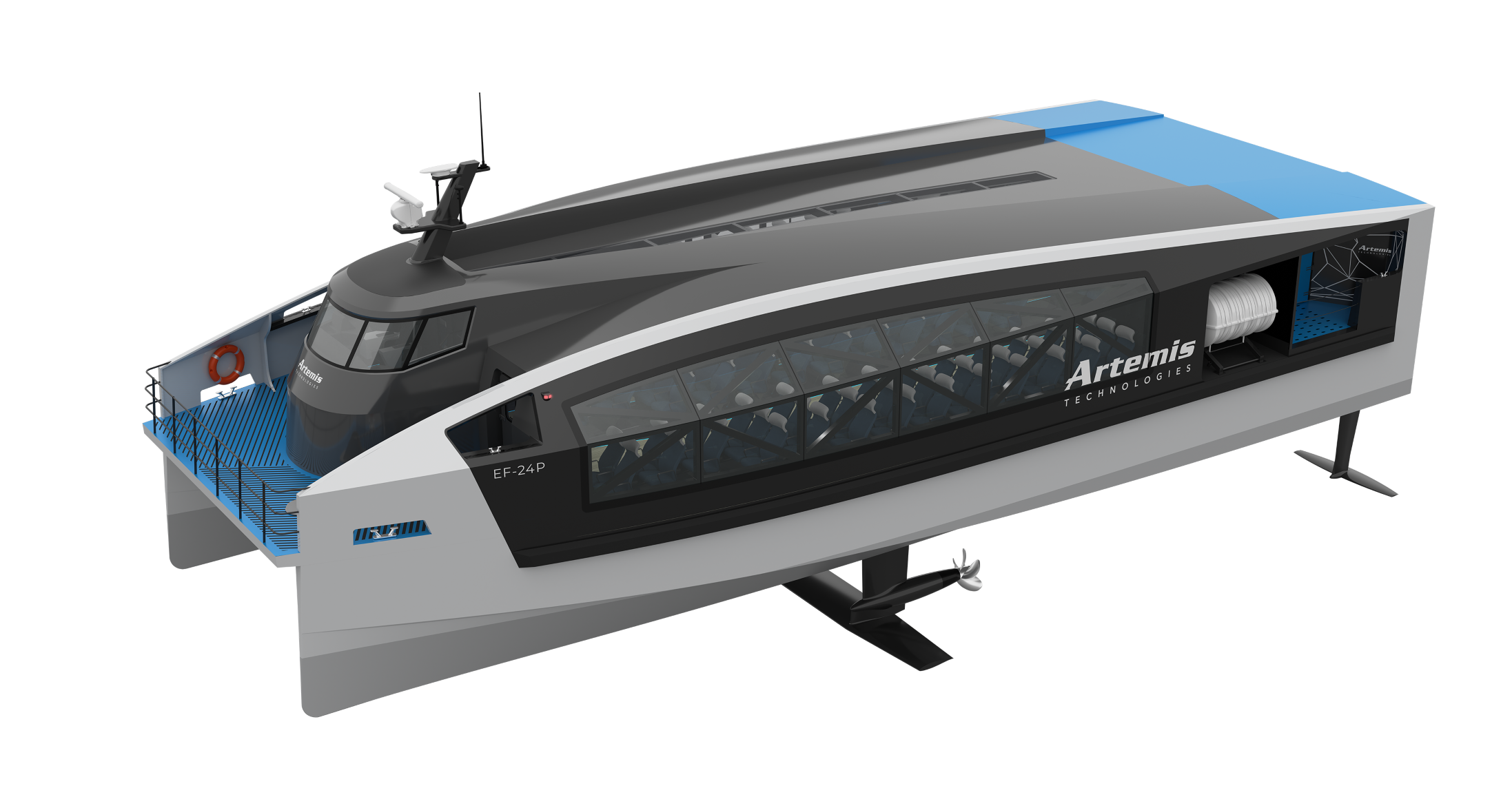
CRUISE SPEED
Foiling range*.
*Performance figures provided are the maximum achievable dependant on variables including vessel specification, load, sea state and temperature.
Future of maritime transport
Introducing the world's first 100% electric foiling passenger ferry for commercial operations, the Artemis EF-24 Passenger.
A cost-effective smart mobility enabler which produces zero emissions in operation. The Artemis EF-24 Passenger ferry allows cities across the globe to unlock the potential of previously untapped waterways, address congestion and reduce harmful emissions.
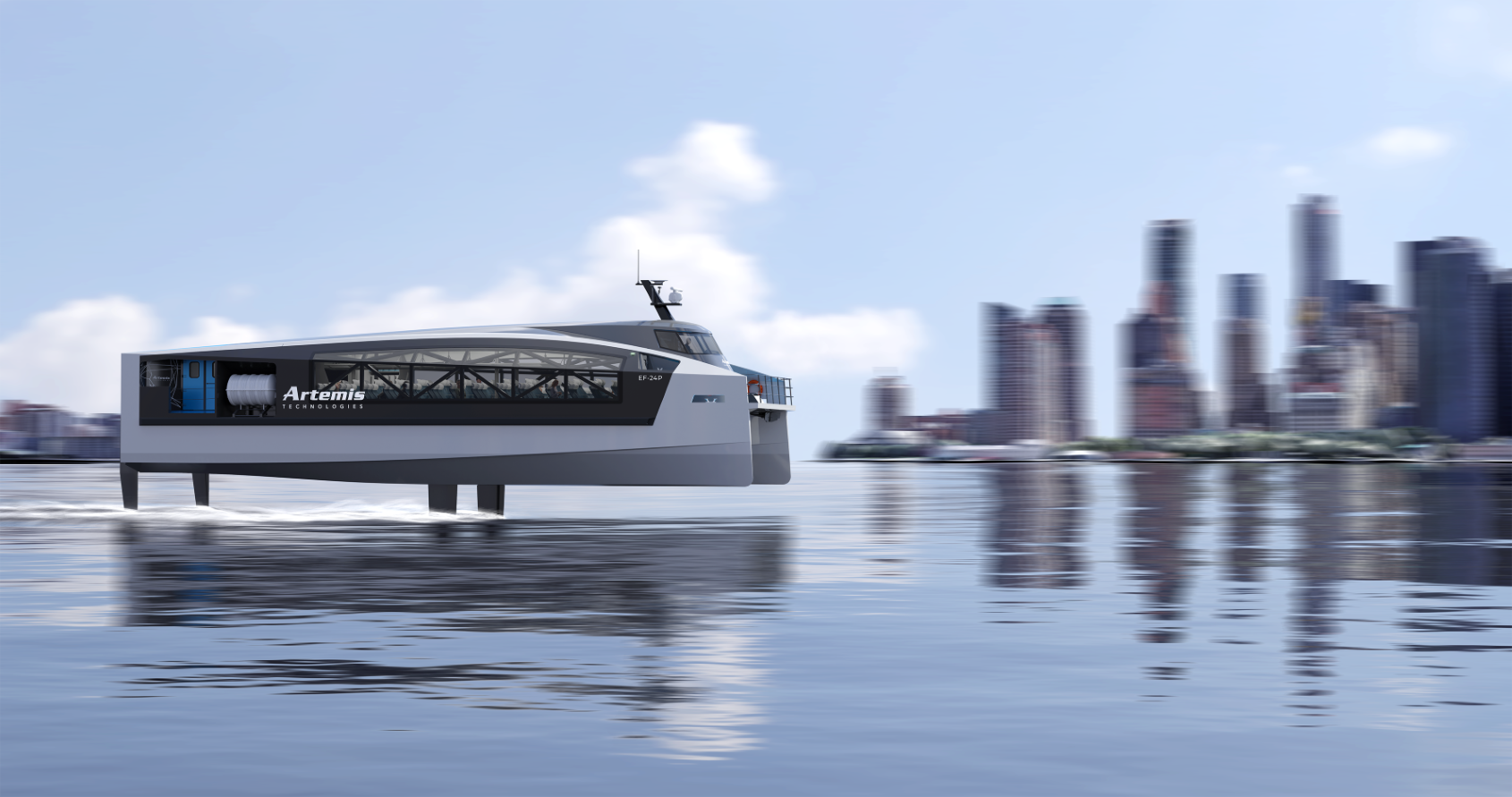
Key features
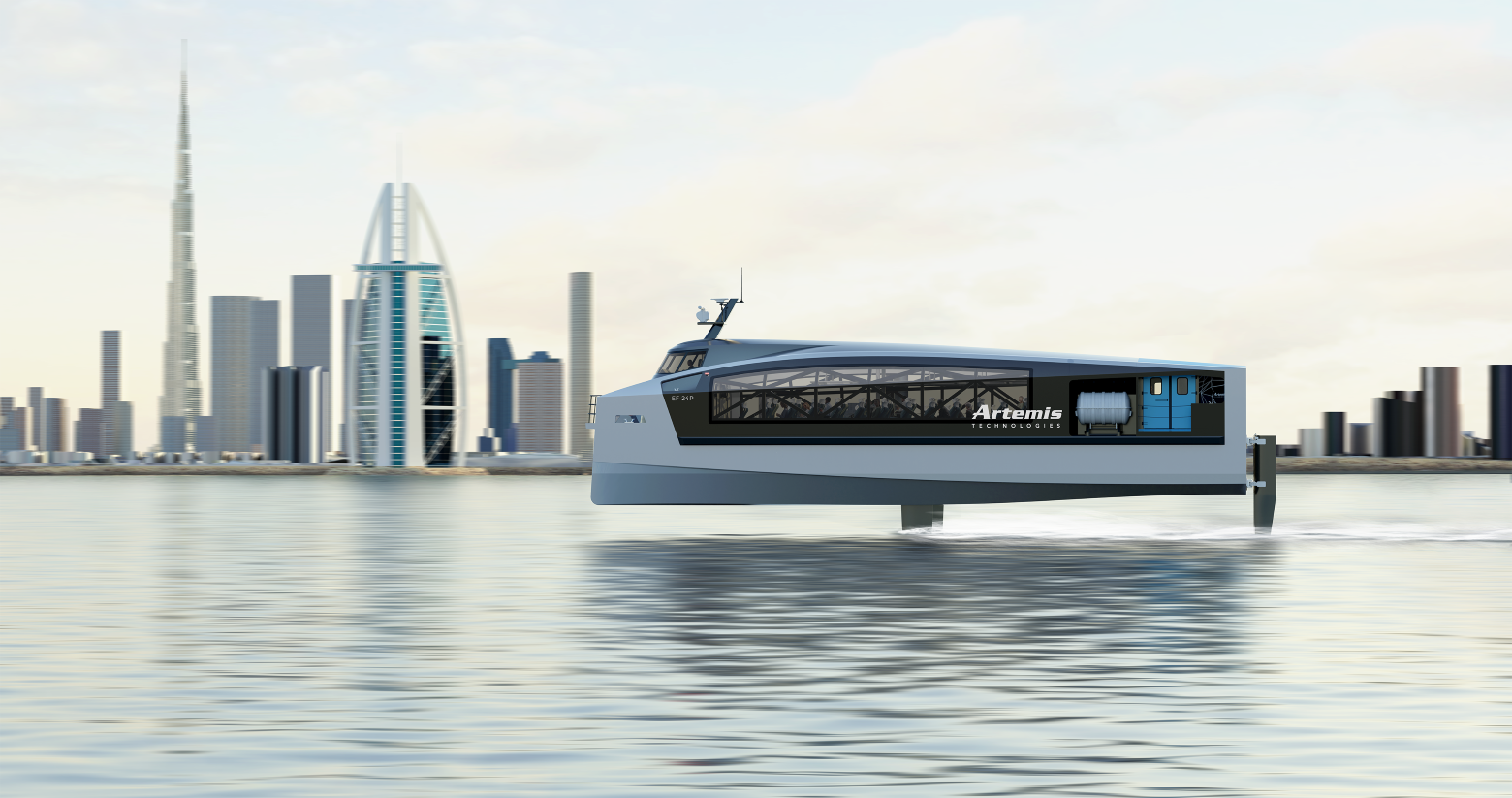
World first technology
Artemis Technologies has developed the world’s first 100% electric foiling passenger ferry that will meet the International Maritime Organization’s High Speed Craft code.
The Artemis EF-24 Passenger is powered by our world-leading Artemis eFoiler® technology which has been rigorously tested to ensure unparalleled ride comfort and performance in the toughest conditions.

Passenger comfort
Experience a journey like no other with the groundbreaking Artemis EF-24 Passenger. This cutting-edge foiling ferry effortlessly glides above the waves, ensuring a smooth journey that removes the usual bumpy ride and associated seasickness.
Its 100% electric propulsion contributes to a more enjoyable journey, free from air and water pollution, reducing noise and aligning with global net zero initiatives. This promotes a more sustainable mode of transport.
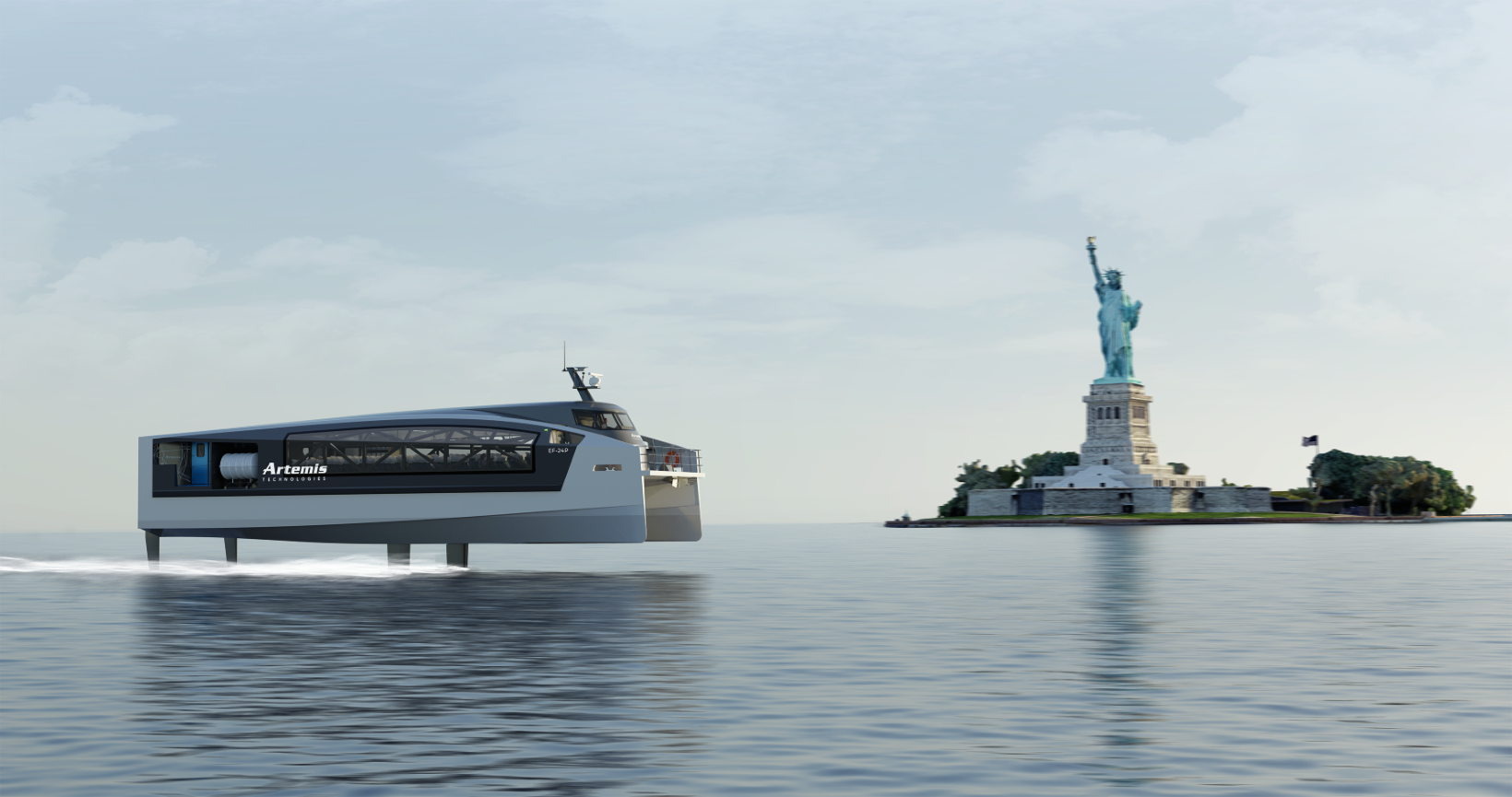
Better for business
Set to provide an immediate transport solution that competes economically with road and rail, the Artemis EF-24 Passenger offers operators significant OPEX savings.
Compared to a conventional high-speed diesel ferry, the Artemis EF-24 Passenger has a much lower OPEX due to the increased energy efficiency, fuel cost savings and reduced maintenance costs.
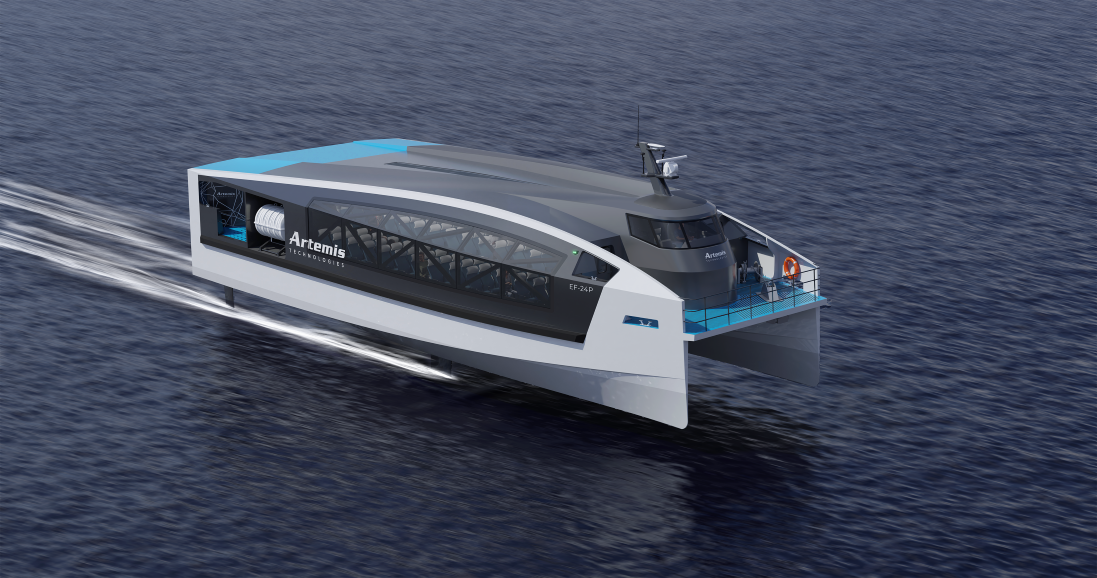
Minimal wake, maximum Impact
The reduced wake of the Artemis eFoiler® system means our revolutionary ferry can avoid local speed restrictions. This significantly reduces journey time by allowing for high-speed operations close to shore while limiting damage to shorelines or anchored vessels.
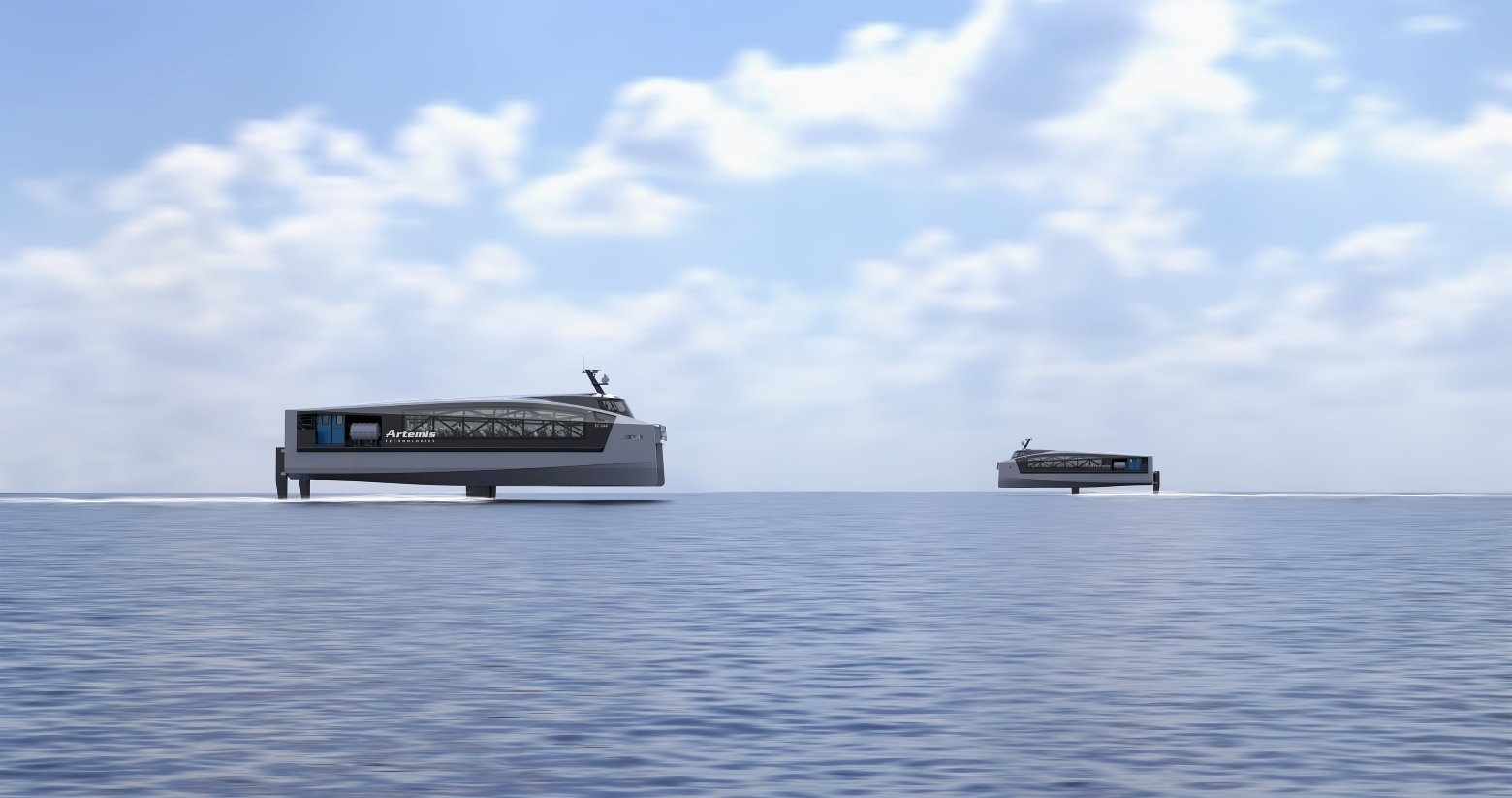
The Artemis EF-24 Passenger balances the requirement for people to continue to move around with the need to reduce carbon emissions.
With its advanced technology, this high-speed ferry will revolutionise the way people travel within cities, producing zero emissions, contributing to smarter urban mobility.
Journey for miles, charge in minutes
A true testament to innovation and sustainability, the Artemis EF-24 Passenger is 100% electric – powered by our revolutionary Artemis eFoiler® electric propulsion system.
With ultra-fast charging capability, a full charge can be achieved in less than 60 minutes, allowing for seamless and uninterrupted journeys. Requiring minimal servicing in contrast to conventional diesel engines, the ease of charging further solidifies the Artemis Technologies' commitment to efficiency and lower environmental impact.
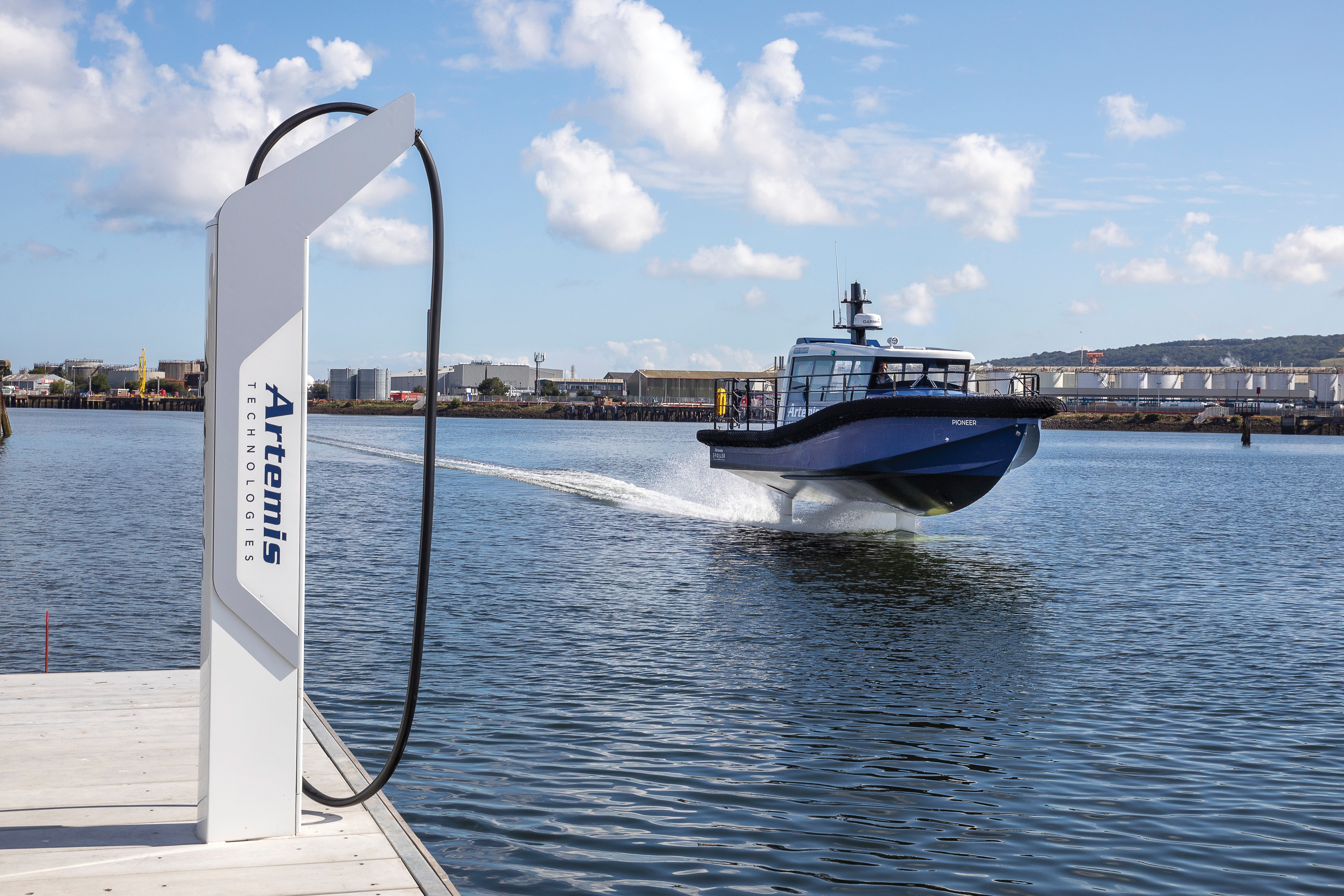
Sustainability
Charting a course towards a more sustainable maritime future, we are committed to pioneering sustainable solutions that help to redefine the maritime industry and tackle the global climate challenge.
From developing vessels that produce zero emissions in operation to innovative design tools, our journey towards sustainability guides everything we do. Join us on a journey as we navigate towards cleaner seas and a brighter tomorrow.
Frequently asked questions
How does the artemis ef-24 passenger perform in rough weather.
Performance of our Artemis eFoiler® technology has been validated during sea trials in the Irish Sea against its gasoline displacement sistership. Energy efficiency, ride comfort and wake creation of the two vessels has been recorded whilst operating across a wide range of weather conditions.
We are working with DNV towards class approval where we've engineered the Artemis EF-24 Passenger to be approved for operation in 2.5m significant wave height while foiling and 4m in displacement mode.
How long is the delivery time?
The delivery time of your vessel will depend on what variables you choose. Please contact us to discuss a build slot.
How does the Artemis EF-24 Passenger provide a comfortable ride?
Foiling above the waves removes the usual bumpy ride and associated seasickness while our autopilot flight control system autonomously controls the ride height, roll and pitch of the craft.
Our eFoiler® vessels
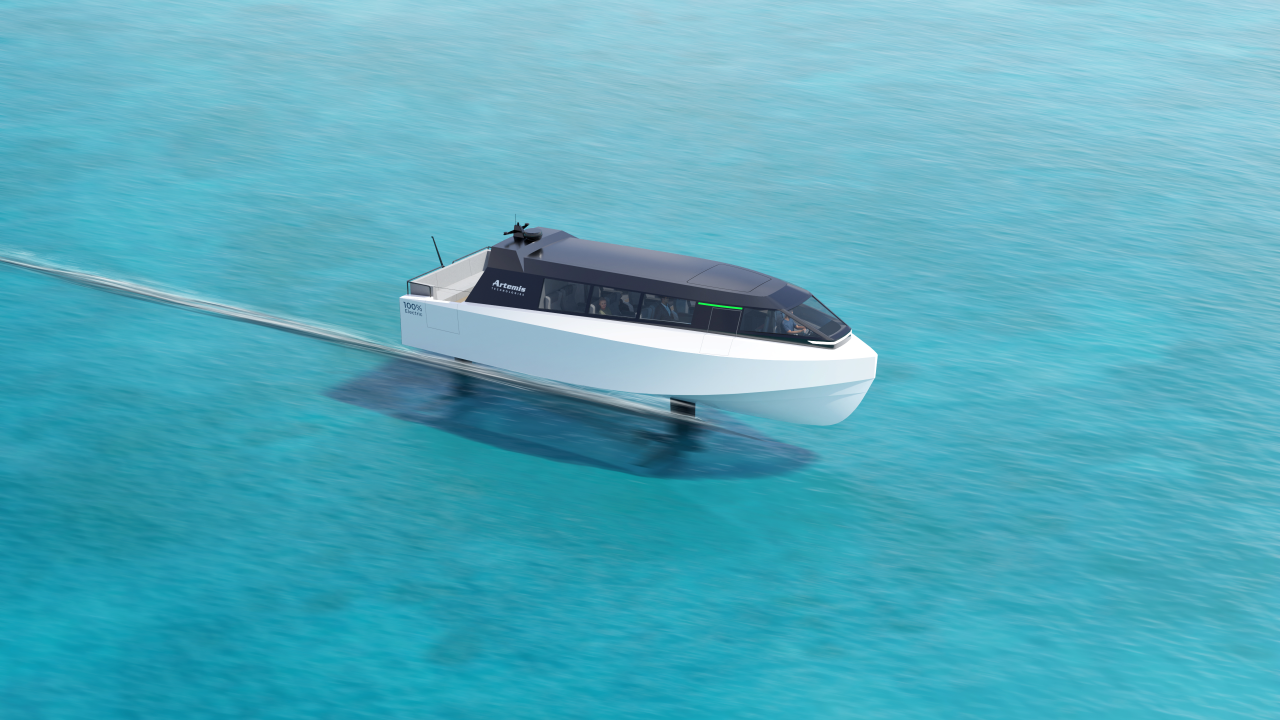
EF-12 Escape
Smart mobility.

EF-12 Workboat XL
Unlock the potential of your waterways.
Construction of the Artemis EF-24 Passenger is rapidly progressing. With build slots filling up, ferry operators are encouraged to secure their spot in line to be among the first to experience the benefits of this new technology. Please get in touch to find out more.


Classic look hydrofoiling electric boat debuts in Moscow
A team in Russia has developed this sleek hydrofoiling electric boat with a retro-tech classic runabout look, both inside and out.
The boat is called the Molniya – Russian for ‘lightning’ – and uses fixed surface piercing (SP) foils rather than the retractable inverted-T fully submerged (FS) type on boats like the Candela 7 .
The Molniya prototype was built by Artem Markov and a small team he assembled in Moscow. Markov is a graduate of the Moscow Automobile and Road Construction Institute, where he was part of their Formula MADI electric car racing team that competed against other universities from around the world.
Hydrofoiling electric boat idea started in 2016
Like many other electric boat developers he is also a long time sailor and says “ I have never been able to understand what is the beauty of going on motor boats with a lot of vibration and noise. So, I decided I wanted to find a way to transfer the silence and comfort of a sailing yacht to a boat. The idea came to me in 2016, and from that moment I started working on the project .”
He is a big fan of the work that the team at Candela has been doing, and is well versed in their reasonings of why hydrofoiling is the way to reduce drag and increase efficiency and comfort. So he knew foiling was the way to go and began to design his dream boat.

It is one thing to know exactly what one wants, but b udget realities quite often make inventors adapt. So he found a classic fibreglass-and-aluminum hull and went to work redesigning and converting it. The team had to strengthen and reinforce the hull to handle the stresses from the front foils. At the stern of the boat they designed protruding half-wings that would help lift the boat onto those front SP foils as it accelerated.
80kW motor mounted to stern drive unit

That gives the 8.9 m • 29 ft boat a cruising speed of about 20 kts • 37 km/h and maximum speed of 36 kts • 66km/h. As for range, the Molniya can go for 135 Nautical miles at 5 kts, 17 Nm at 25 kts and 20 Nm at the top speed.
For the battery, they have taken stock lithium-ion cells and developed the modules themselves. The size is 160kW and there are some creative and useful ideas incorporated into the charging and battery management systems. One is the ability to connect a warning system to a GPS route so if you are driving at a speed that is taking yo u beyond range of getting back to shore the motor will automatically slow down. When you do get back, a full 0-100% charge takes 3.5 hours and you can check status through SMS.

One of the intriguing things about the Molniya is that all of the electric boat technology has been incorporated into a striking overall retro look. The dashboard looks like it might have been taken from a 1950s luxury car catalogue, but of course the actual meters are all digital. The interior of the entire boat harkens back to an earlier day, appearing ready to whisk 6 passengers off to a swing era supper club.
From prototype to production
Having built and tested the prototype from an existing hull, the goal of Markov and the team is to move to production mode and use the materials he always envisioned in his dream boat. While the aluminum and fibreglass of the original have been useful for testing, speed and range will benefit from materials like much lighter carbon-kevlar.

The adapted stern drive was useful for proving the hydrofoiling electric boat concept, but all of the designers and engineers are keen to see the improved efficiency they will get from a motor, drive and battery system they have designed from scratch for the Molniya. As for the foils themselves, the production model will use lighter, thinner composites instead of stainless steel.
Obviously the spring and summer of 2020 has not provided the best opportunities to introduce the prototype at boat shows and stir up interest with consumers, the trade or investors. It seems, though that the Molniya is the type of boat that should appeal to peopl looking for the same thing Artem wanted for himself: a classic motor boat experience but one that is quiet, odour free…and smooth sailing.
You can find out more on the Molniya website, lightning-foil.com .
Exciting things are happening every day in electric boats and boating. Subscribe to the Plugboats newsletter so you don’t miss a thing!
Email address:
Follow Plugboats on »» facebook , »» twitter »» Instagram »» Linkedin
Exciting things are happening every day in electric boats and boating. Subscribe to the Plugboats newsletter so you don't miss a thing! (Or follow us on social media)
- New French electric rim motor now taking pre-orders
- New Niagara Falls electric ferries have set sail!
Leave a comment Cancel reply

Get all the latest electric boats and boating news delivered to your mailbox!
Sign up here for the Plugboats newsletter.
IT’S FREE!
Terms and Conditions - Privacy Policy

- DREDGE/CIVILS
- AUSMARINE (OCEANIA)
- MIDDLE EAST/NORTH AFRICA
- LATIN AMERICA
VESSEL REVIEW | Sinichka – Electric commuter boats designed for Russia’s Moskva River

A series of three new electric monohull commuter ferries have already begun operational sailings on the Moskva River in the Russian capital Moscow.
Built by Russian shipyard Emperium, sister vessels Sinichka , Filka , and Presnya – all named after rivers in Moscow – are being operated by the Moscow Department of Transport and Road Infrastructure Development (Moscow Deptrans). They are the first units of a planned fleet of 20 vessels that will serve the capital city and other nearby communities. The new ferry system will be the water transport system to be operated on the Moskva River in 16 years.
Each vessel has a welded aluminium hull, an LOA of 21 metres, a beam of 6.2 metres, a draught of only 1.4 metres, a displacement of 40 tonnes, and capacity for 80 passengers plus two crewmembers. Seating is available for 42 passengers on each ferry, and the main cabins are also fitted with USB charging ports, wifi connectivity, tables, toilets, and space for bicycles and scooters. The cabin layout can be rearranged to allow the operator to adjust the distances between the seats and to install armrests of varying widths.

An open upper deck is also accessible to passengers and is the only area on each ferry where smoking is allowed.
The ferries are all of modular construction with each ferry's wheelhouse, main cabin, and other structural elements being built as complete, separate components. This enables the ferries to be easily dismantled for transport to anywhere in Russia by rail and then quickly re-assembled within seven days.
The ferries are also ice-capable. Recently completed operational trials on the Moskva showed that the vessels can also easily navigate under mild winter conditions with broken surface ice, though year-round operations are planned for the entire fleet.
The ferries are each fitted with 500kWh lithium iron phosphate battery packs that supply power to two 134kW motors. This configuration can deliver a maximum speed of 11.8 knots, a cruising speed of just under 10 knots, and a range of 150 kilometres.
Emperium said the transfer of rotation of electric motors to the propeller is carried out by direct drive. As a propulsion installation, a pulling rotary propeller-steering column with double screws is used. The installation of double pulling screws, with similar power, allows an operator to increase the efficiency of the propulsion system to deliver a slightly higher speed or to reduce energy consumption. This arrangement also provides the ferries with enhanced manoeuvrability necessary for navigating in close quarters.
The batteries themselves have projected service lives of 10 to 12 years and are fitted with safety features such as built-in fire extinguishers and gas vents. Quick-disconnect features allow the batteries to be easily removed for replacement or maintenance.
Some of our readers have expressed disquiet at our publication of reviews and articles describing new vessels from Russia. We at Baird Maritime can understand and sympathise with those views. However, despite the behaviour of the country's leaders, we believe that the maritime world needs to learn of the latest developments in vessel design and construction there.
Click here to read other news stories, features, opinion articles, and vessel reviews as part of this month's Passenger Vessel Week.
| Type of vessel: | Commuter ferries |
| Flag: | Russia |
| Operator: | Moscow Department of Transport and Road Infrastructure Development, Russia |
| Builder: | Emperium, Russia |
| Hull construction material: | Aluminium |
| Length overall: | 21 metres |
| Beam: | 6.2 metres |
| Draught: | 1.4 metres |
| Propulsion: | 2 x 134 kW |
| Maximum speed: | 11.8 knots |
| Cruising speed: | 10 knots |
| Range: | 150 kilometres |
| Batteries: | Lithium iron phosphate, 500 kWh |
| Accommodation: | Cabin; toilets; bicycle/scooter area |
| Crew: | 2 |
| Passengers: | 80 |
| Operational area: | Moskva River, Russia |
Related Stories


IMAGES
VIDEO
COMMENTS
The typical electric propulsion system for a 10m, 6-tonne cruising yacht will usually be designed to provide around five to six hours of gentle cruising in fairly neutral currents at around 4 knots, or maybe 10 hours of motor-sailing, before requiring a charge. Unlike a car, however, a boat can have solar panels on its deck, coachroof and arch ...
Conversion Stories. C & C 36 Encounter. Mar 13, 2023. ... Sailing with an Electric Motor In 2021 we installed the QuietTorque™ 10.0 Electric Motor by Electric Yacht on our 1972 Cheoy Lee Clipper Sailboat, which we use for day charters from May through October on Lake Superior. We have been extremely satisfied with the...
When converting your boat to an electric motor, the first step is to choose the right motor. Your boat's size, your speed requirements, and your power needs for onboard appliances and electronics will all factor into this decision. Naturally, larger boats will require more powerful motors. Similarly, if you value speed and have a lot of high ...
Whether quietly maneuvering through a harbor or motor-sailing on low-wind days to create your own apparent wind, our electric solutions will enhance and extend your sailing enjoyment. Oceanvolt offers Hybrid or Electric systems as a power & propulsion option in partnership with many leading monohull boat builders - adding new partners continuously.
With the Spirit 1.0 Evo electric sailboat motor, you can go 5.5 mph (8.8 kph) at top speed on the 21 ft RS21 sailing boat, or troll for 20 hours continuously at 2.2 mph (3.5 kph) according to our test. This electric sailboat motor with regeneration allows you to recover energy from the prop while under sail.
Option 2 - Convert to Electric with an all-electric and solar solution, which means no more exhaust fumes aboard sailboat ever again. Beginning with system design, we can offer solutions to your needs. We can remove your old engine and begin afresh. Or we have the ability to insert hybrid generation and hybrid drive to your existing drivetrain.
Our electric inboard boat motor conversion kits can turn a noisy gas-powered boat into a serene pleasure boat for quiet enjoyment of nature's beauty. Our electric inboard boat motors, ranging from 6HP to a robust 200HP, are a testament to Elco's commitment to innovation and sustainability. We meticulously craft each electric inboard motor ...
Cost - Reason 1. The cost of going electric is comparable to that of fitting an ICE (internal combustion engine). The total cost was less than Au$8 000. This included the sailboat kit consisting of a: 10kW engine, electronics for the motor, gear reducer, display unit, speed control, 9.5kWH of usable battery storage.
The Arcona 380Z is a standard production yacht that has been adapted for electric propulsion. Note the increased solar panel surface area with soft panels bonded to the sails. Credit: Jukka Pakainen. A modern electric yacht can come in all shapes and sizes, from the latest high-tech speed boats with recently developed high-performance electric ...
At Powerflow Marine we know how much time it takes to maintain a boat. That's why we've developed propulsion systems that are reliable and efficient alternatives to diesel or gas engines. We can assist during your conversion planning with video consultations and wiring diagram creation. We have the ability to add on Victron Energy equipment ...
All Oceanvolt systems are engineered to operate at 48 volts for passenger safety and ease of repair. Oceanvolt systems are extremely low maintenance and do not require winterization (no annual engine maintenance costs). Oceanvolt offers Hybrid or Electric systems in partnership with a wide range of multihull designers and boat builders.
The QuietTorque™ 10.0 Sport is a cost effective 10kW electric propulsion system designed for the day sailing and coastal cruising sailboats up to 35' (LOA) and 12,000 lbs displacement. Typically programmed and sized to push boat at cruising or harbor speed. Motors normally ship within 5 business days.
Ed Phillips. April 5, 2022. 0 shares. Ed Phillips embraces zero-emissions sailing by ditching the diesel and converting his Parker Super Seal into an electric sailboat. Electricity is generated by the engine hydrogeneration system when sailing. TAGS: Top stories.
The 8-ton (7,257.5 kg) pilot boat Strad has a single 65-hp combustion engine and two retractable 10kW BlueSpins and the Suzon, a 46' (14 m) traditional pinasse, has two 15kW BlueSpin Stationary motors. The boats have electric autonomy range of 4 to 5 hours at 6 or 7 knots. In addition to the BlueSpin hybrid boat conversion system, BlueNav can ...
Converting an outboard motor to electric reduces emissions, noise, and maintenance while offering instant torque and cost savings, especially amidst rising environmental regulations that favor such technology. The conversion process involves meticulous planning, choosing the right electric motor system, complying with local regulations, and ...
Our EV Conversion Kit includes: EV Motor, Controller, Lithium battery pack, Accelerator, DC-DC converter 12V, Charger, Emergency stop switch, Air conditioning assembly, Motor & Battery mount parts and other parts depending on the boat type. Our offer includes a kit with or without the installation service with a warranty of 2 years.
Electric Propulsion - The Conversion. In order to provide a concise discussion, we have simplified the process of converting from diesel to electric propulsion into three steps: Remove existing propulsion diesel engine. Clean and prepare boat for the new system. Install new electric propulsion system.
Pros of electric propulsion. Less noise: Electric motors are quieter than diesel engines and nearly vibration free. Lower long-term cost: Motors last a long time and require no fuel. You need batteries and electricity, but the sun and wind can recharge your batteries.
Electric propulsion is ideally suited to inland waterways due to the low cruising speed of boats. It provides plentiful reliable power, quieter drive, and better manoeuvrability. It's also 100% emissions free, has up to 96% motor efficiency, and lower cruising costs. Broom is an approved Fischer Panda UK service provider. We offer conversion ...
The hybrid propulsion system is a brand-new design, and it typically consists of a mix of internal combustion engines and an electric motor powered by an energy storage system (ESS) [5].The typical hybrid propulsion system was illustrated in Fig. 1.The primary source of energy for the propulsion system at high speed is the energy from an internal combustion engine while the ESS supplies ...
One of the most exciting advancements in recent years is the rise of electric outboard motors that make gas-to-electric conversions feasible. As the largest manufacturer of outboard engines in the world, Mercury Marine has taken the lead with its innovative Avator series, making it easier for owners of mid-size boats to transition from ...
Passenger comfort. Experience a journey like no other with the groundbreaking Artemis EF-24 Passenger. This cutting-edge foiling ferry effortlessly glides above the waves, ensuring a smooth journey that removes the usual bumpy ride and associated seasickness. Its 100% electric propulsion contributes to a more enjoyable journey, free from air ...
A team in Russia has developed this sleek hydrofoiling electric boat with a retro-tech classic runabout look, both inside and out. The boat is called the Molniya - Russian for 'lightning' - and uses fixed surface piercing (SP) foils rather than the retractable inverted-T fully submerged (FS) type on boats like the Candela 7.. The Molniya prototype was built by Artem Markov and a small ...
The new ferry system will be the water transport system to be operated on the Moskva River in 16 years. Each vessel has a welded aluminium hull, an LOA of 21 metres, a beam of 6.2 metres, a draught of only 1.4 metres, a displacement of 40 tonnes, and capacity for 80 passengers plus two crewmembers. Seating is available for 42 passengers on each ...